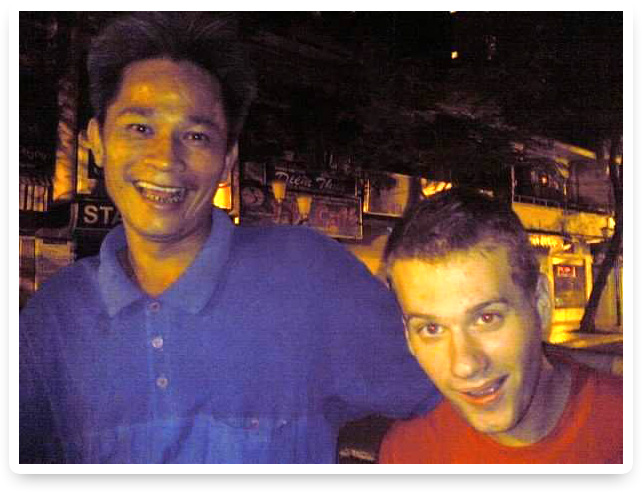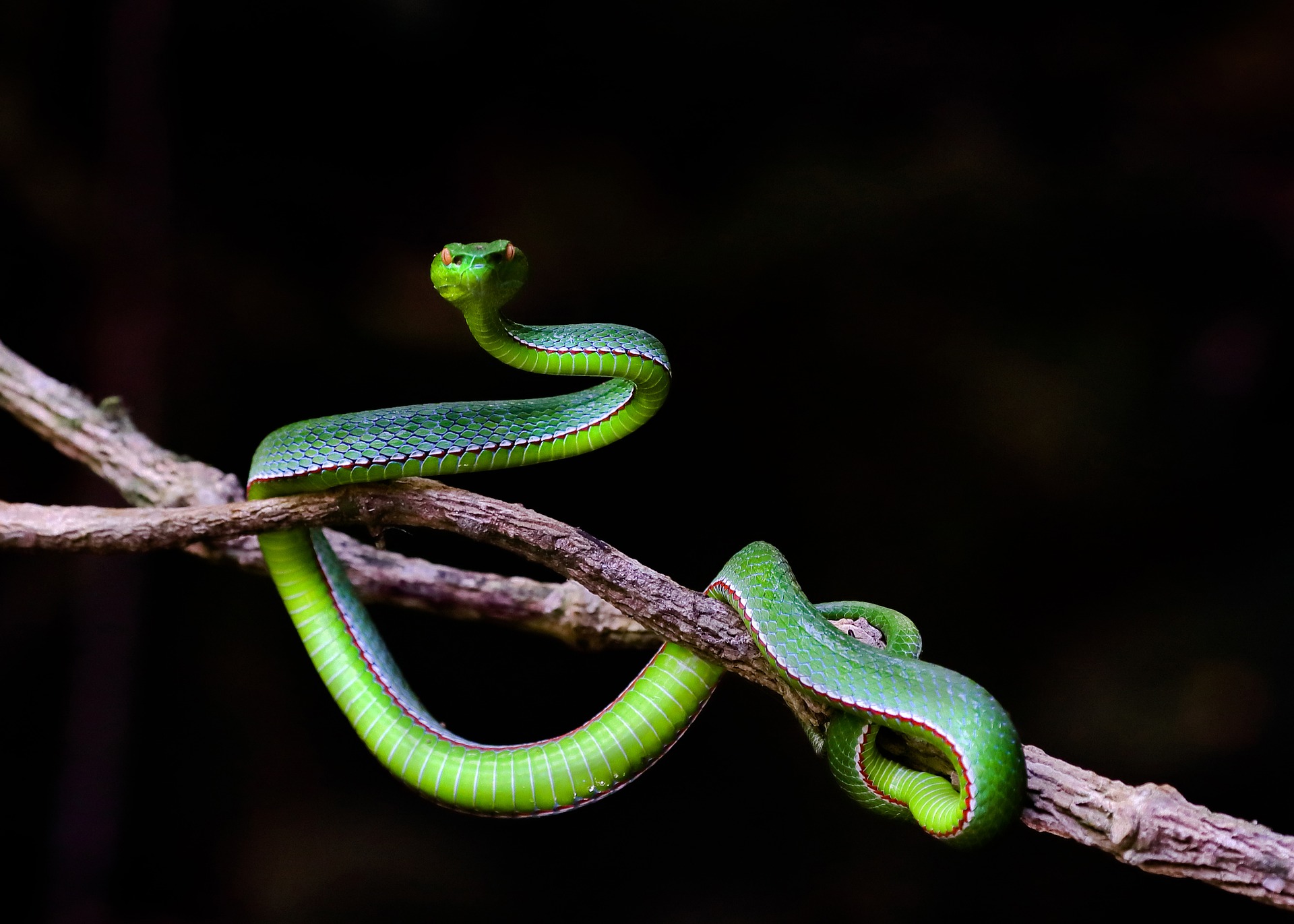
Vietnam’s Formidable Wild Animals & Habitats!
If you want to know what Animals kill you in Vietnam, you’ve come to the right article! Yes, Vietnam has a lot of threatening beasts that can put you in the ground quicker than a VC soldier. The tropical climate breeds dangerous animals, and Vietnam is no exception.
The type of animals you can expect to see are the Vietnamese giant centipede, Saltwater crocodile, Malayan Pitviper, Weaver ants, White-lipped pit viper, Many-banded Krait, Mosquitoes, Yellow Sac Spider, Indochinese Tiger, Clouded Leopard, Gaur, Russell’s Viper, Jellyfish, Golden Jackal, King cobra, Asian Black Bear, Sun Bear, Wild Boar, Red-headed krait and Fea’s viper
Table of Contents
Vietnam’s Most Formidable Animals
Vietnamese giant centipede
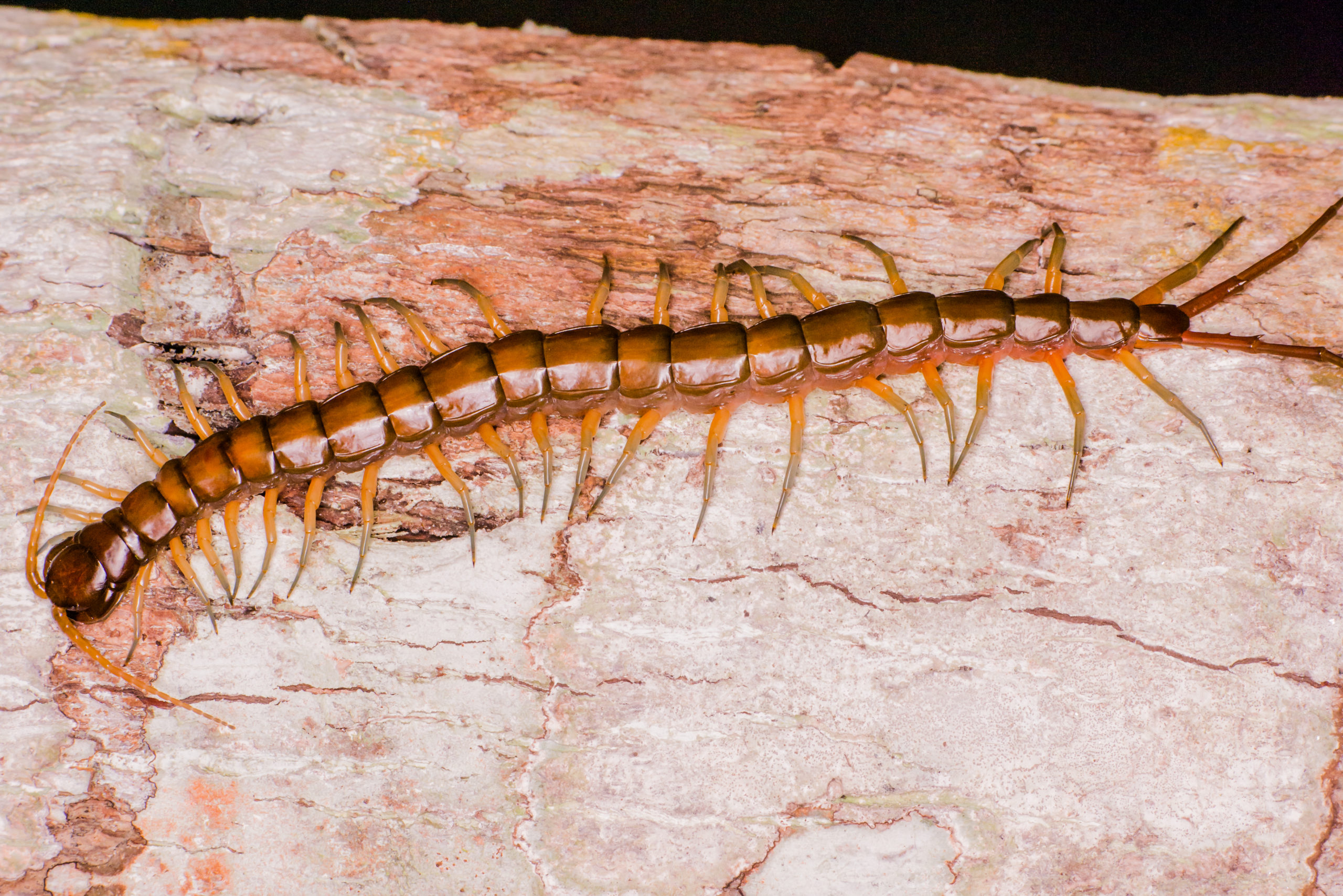
I remember hearing a line in the movie Platoon about a centipede, and it goes, “Pass me that big crawly mother f**ker we found in the ammo creek, I’m gonna put it in this boy’s crotch and see if he can walk?” Since then, I’ve developed PTSD from how disgusting and freakish this insect looks.
The centipede can also be called the “Chinese red-headed centipede” and grows around 8 inches long. The insect can be aggressive and will happily oblige to fight to the death if needs be. It would be best to watch out for its venomous bite, which quickly drops and paralysis spiders and other insects. You need to get to the hospital for humans can get necrosis (Erodes body tissue) which can bring severe tissue damage if left un-treated.
You can find the centipede in the south of Vietnam, and one positive is you won’t find them crawling in your pint in Saigon as their found in the rural/tropical areas.
Saltwater crocodile
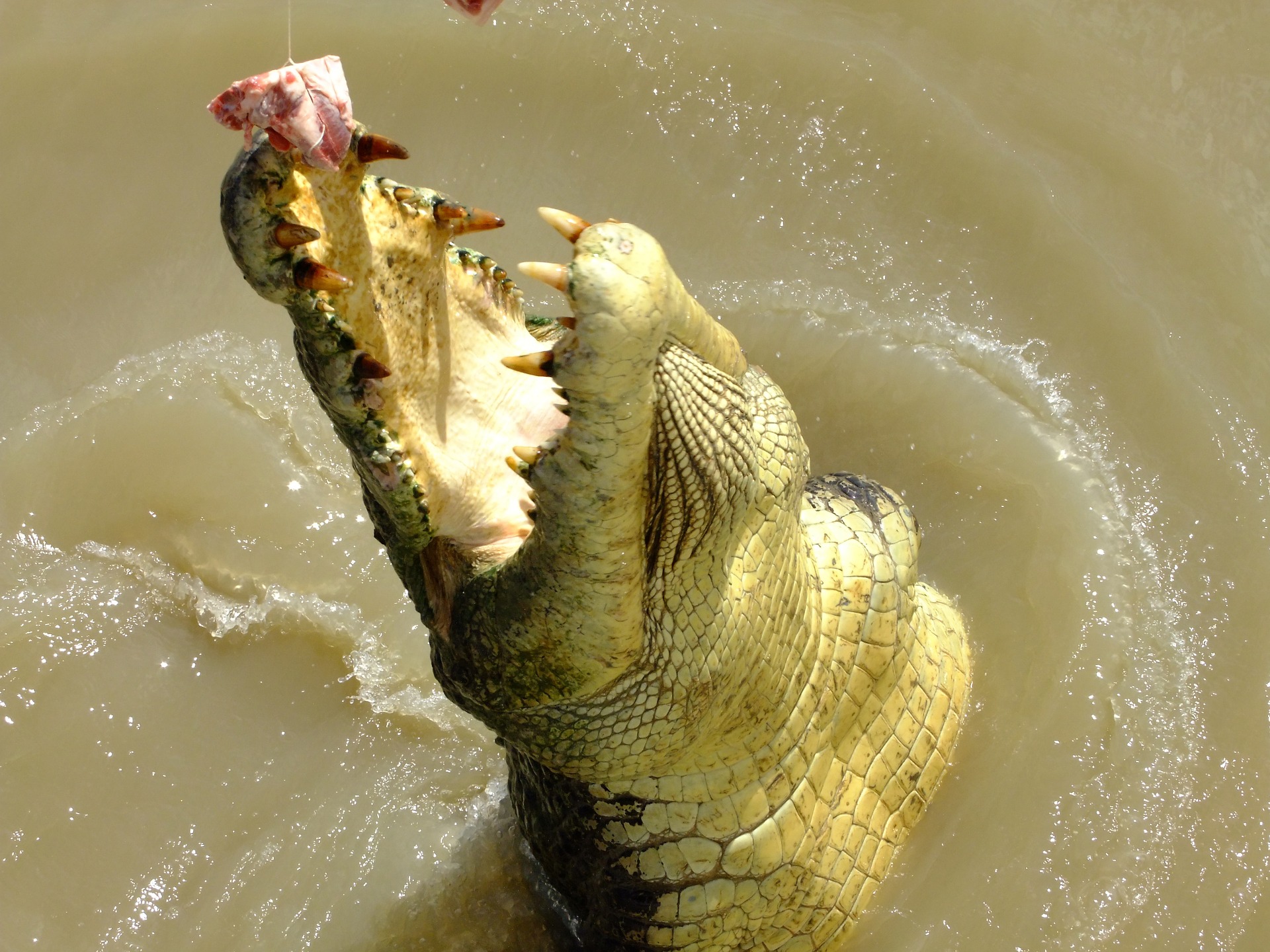
These beasts don’t play around and need respect as their power is ferocious, and you can find yourself in deep water fast if your not careful with these brutes. These reptiles have been swimming around for millions of years and need to be respected.
Compared to other salt-water crocodiles, the Vietnamese one has more face and is leaner overall than the African and Australian. These crocs can weigh up to 500kg and 6 meters in length, so your chances of survival are next to none if you come across this specimen.
Its worth noting that these crocs don’t like you in their space and will treat you as a threat if you go close to them. A small positive is Vietnam doesn’t have a big population of crocs anymore. The northern wetlands have a few numbers, and the odd croc can be seen down south now and then.
Malayan Pit Viper
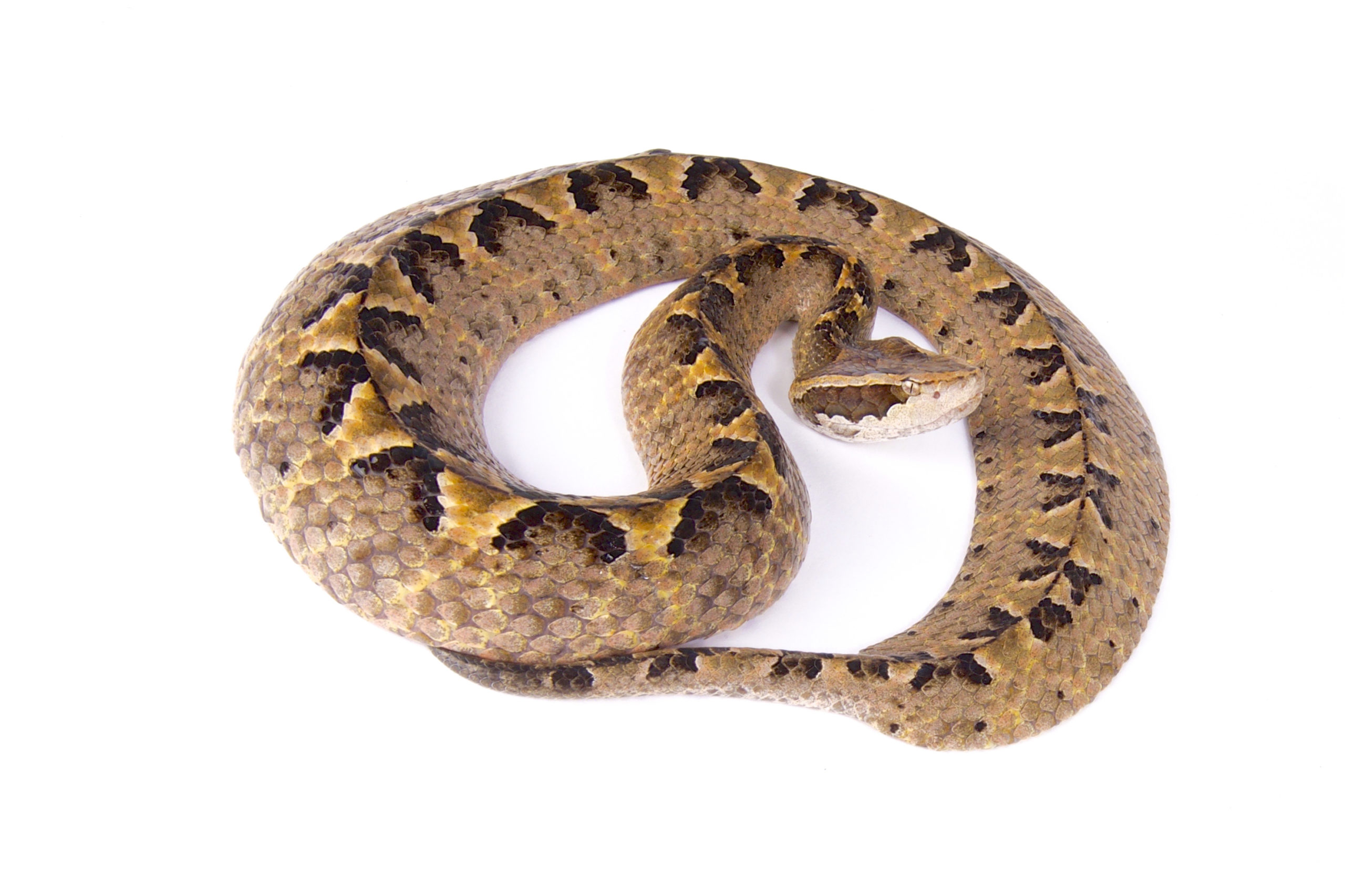
This confident viper is in the group of the 30 venomous snakes and has a nasty bite that can be deadly! You find this snake all over Southeast Asia, which is positive as many scientists have tried and tested. The antivenom is dotted all over the country, and most hospitals stock it also, which is reassuring.
The snake comes across as moody and not fazed by humans at all! A lot of time its you that will have to change direction if you see one. One positive is that most people will fully recover if this viper bites you, but in extreme cases, limb removal and deaths still happen.
Weaver ants
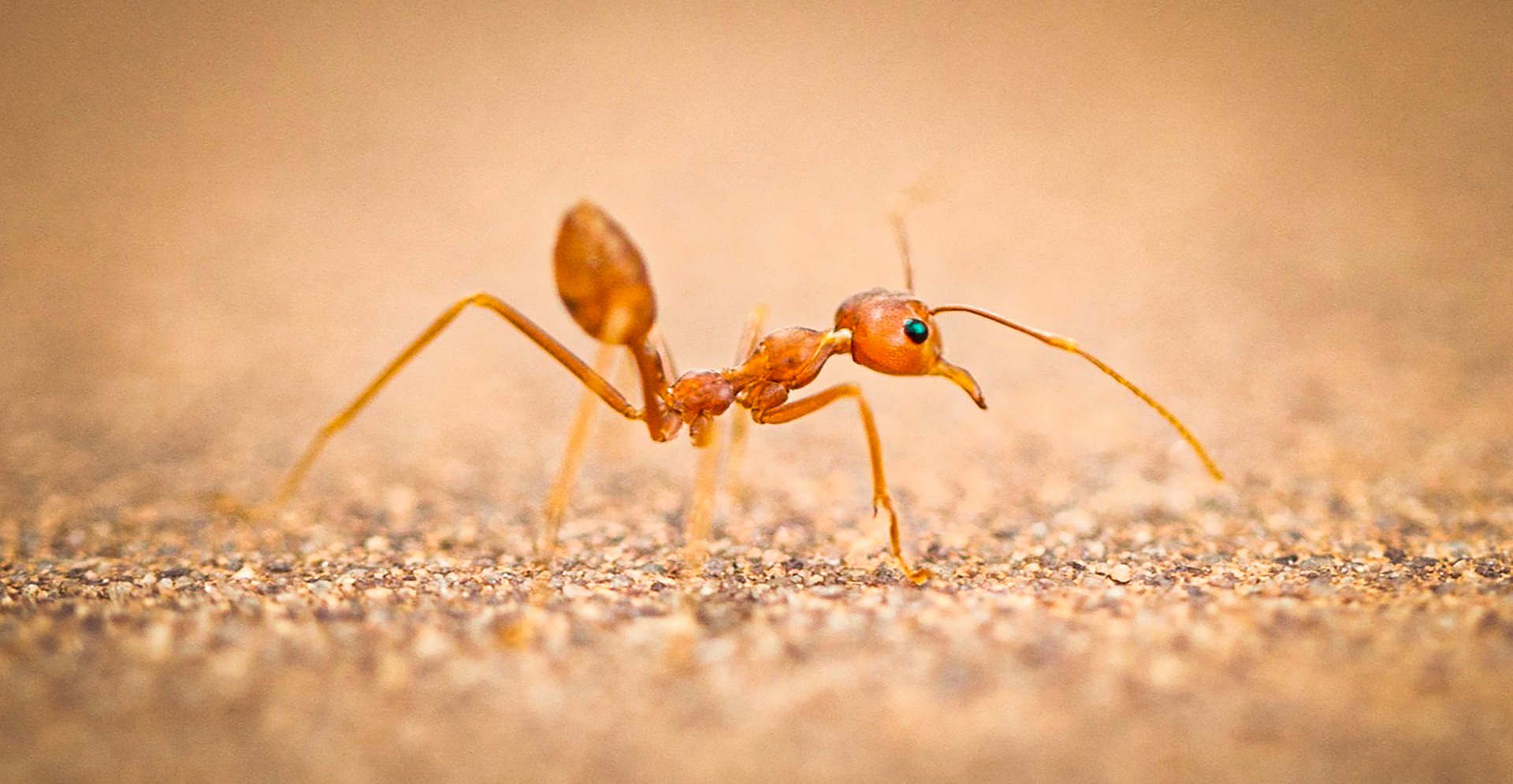
Ants are the most destructive insects on the planet and offer no mercy to anything living! If you leave any food anywhere exposed, expect ants to be around the corner in SEA. The Weaver ant is on par with the fire ants, which isn’t good news as they can seriously bite and have a venom-like acid, which burns and irritates the skin.
You find the Weaver ant everywhere in SEA and Australia, and something else that’s interesting is their nests are up trees as opposed to the ground. It gets better, in some indigenous areas. The local’s snack on Weaver ants like their sweets.
White-lipped pit viper
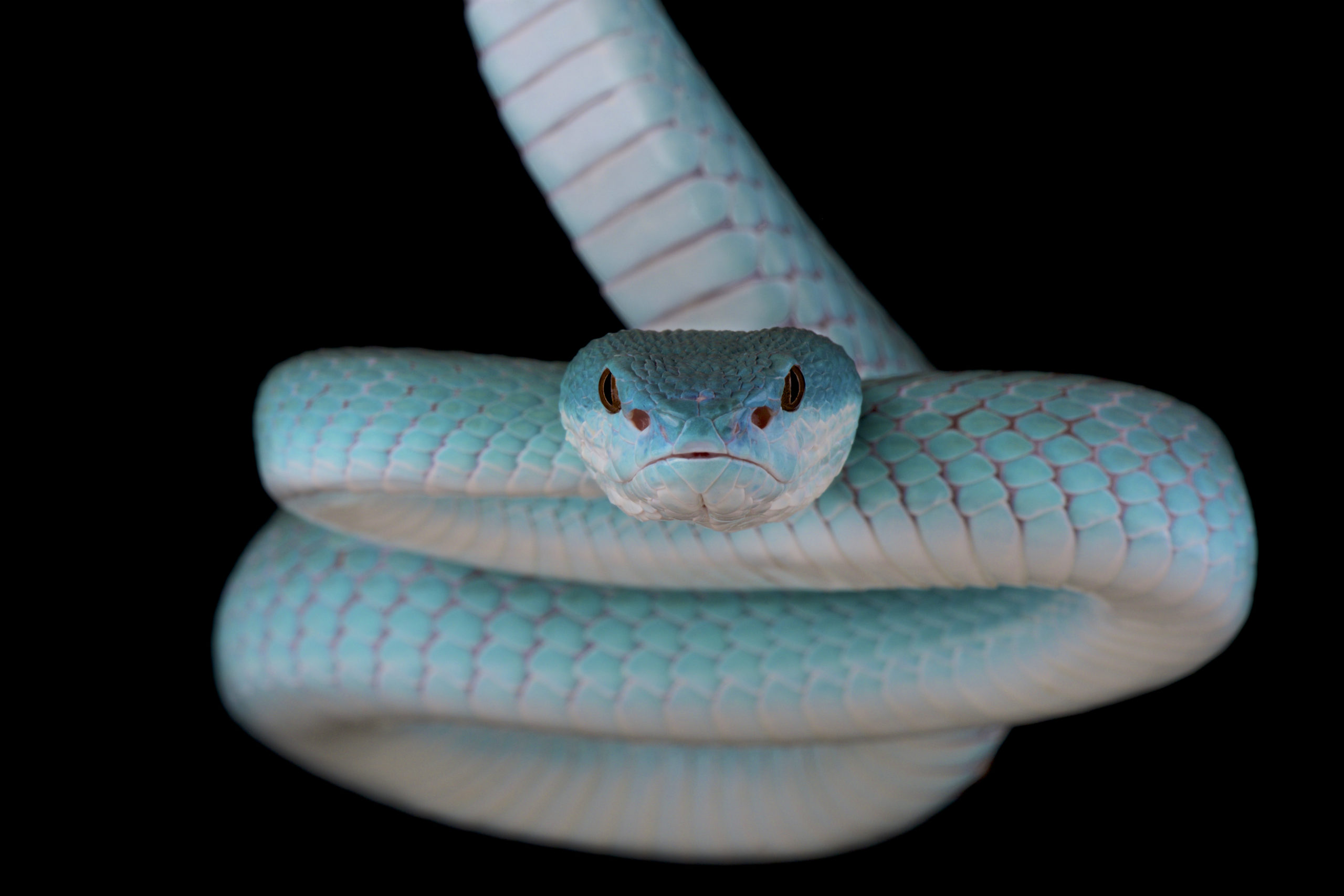
Perhaps the most venomous snakes in Vietnam, and you must respect it with its excellent camouflage and slick ways. Amongst the wetlands, bamboo, and waterways, this slippery customer lerks for prey and predators. The viper can be found all over South East Asia and as far as the Himalayas.
The snakes have a usual V-shaped head like most vipers. The length for males is around 60cm, and for females being a tad longer. The clouring of the snake is amazing, with a leafy dark green top and a light yellow belly.
Luckily, your chances of survival are high if you get a bite, but that doesn’t mean you won’t get ill. The womb will leave you with circulation problems and a significant swelling that lasts for up to a week.
Many-banded Krait
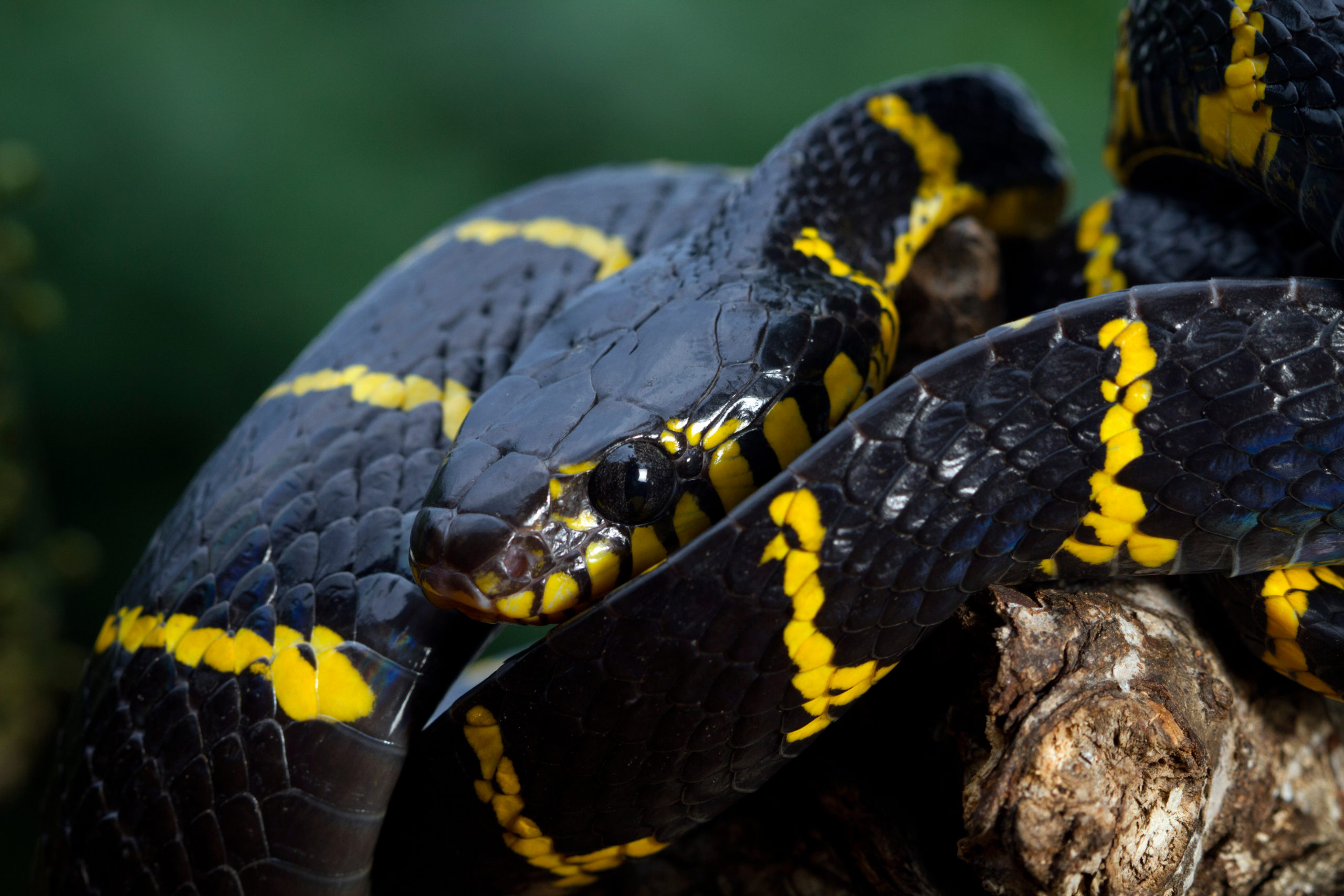
Just the look at this snake makes you tense. It reminds me of something out of Beatle Juice with its black and white camouflage. You can imagine this snake huntings its prey in the moonlight sliding up a branch and swallowing a rat.
It’s worth noting that this snake is twice as deadly as a King cobra, so if you get bitten, make sure you get it treated asap! Or you will be six feet under for sure. The good thing is this snake is quite rare in Vietnam and doen’t live in the urban areas.
Mosquitoes
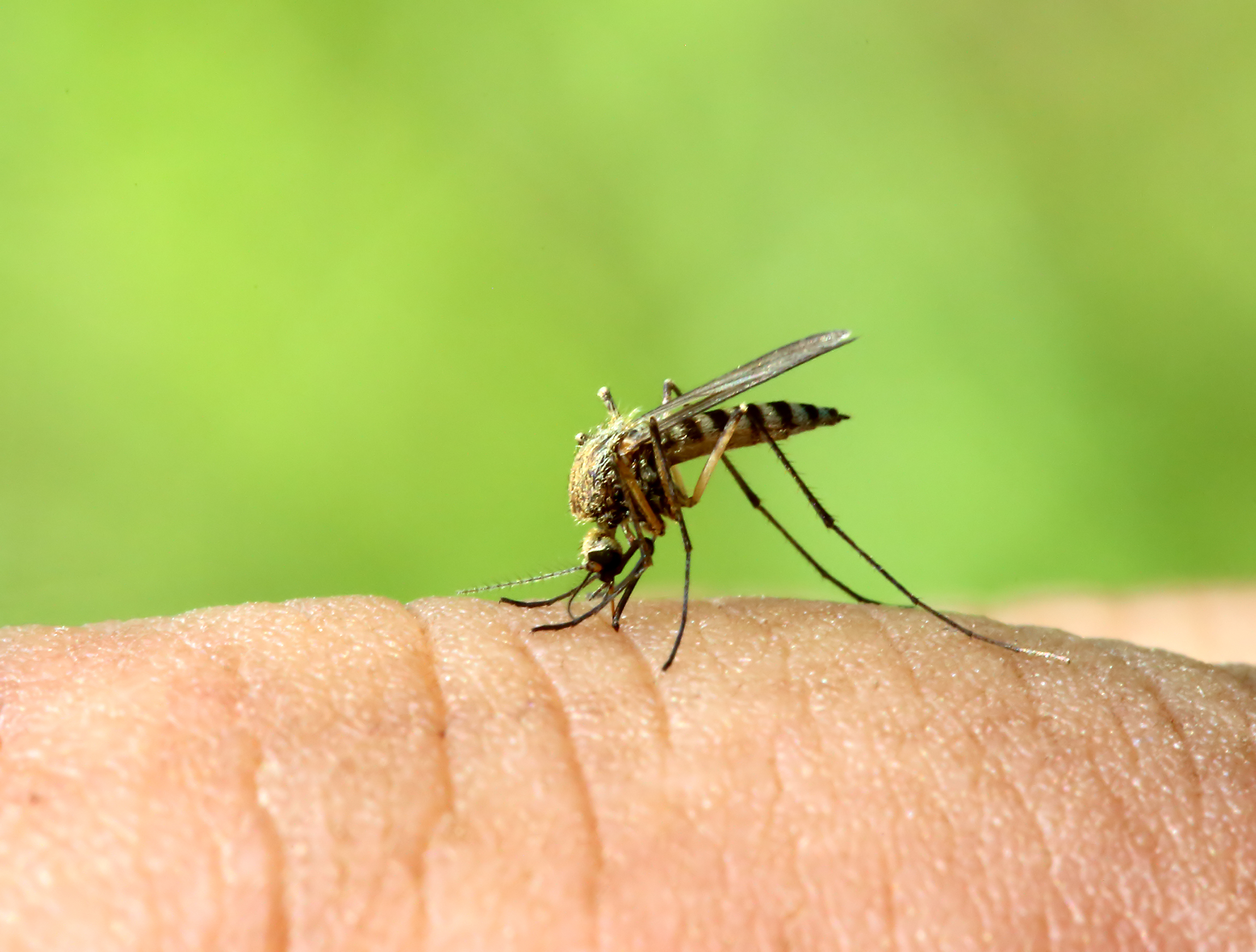
Mosquitoes are one of the most dangerous insects in the world, and its well documented what diseases they can pass on you. But they are just the biggest annoyance in the universe with that one tone buzz around your ears constantly.
You can find yourself in deep waters if you are bitten and infected with malaria, which comes from a contaminated mosquito infected by a parasite. Malaria is no joke, and left untreated can make your blood cell count drop, cause kidney failure, and put you in a coma which can cause death.
Another terrible disease from mosquitoes is dengue fever which can give you soring high temperatures, paralysis in certain areas of your body, and hallucinations.
Make sure you pack mosquito repellent containing DEET – You need to spray early evening and mornings as these critters get active then. I hate mosquitos a lot!
Yellow Sac Spider
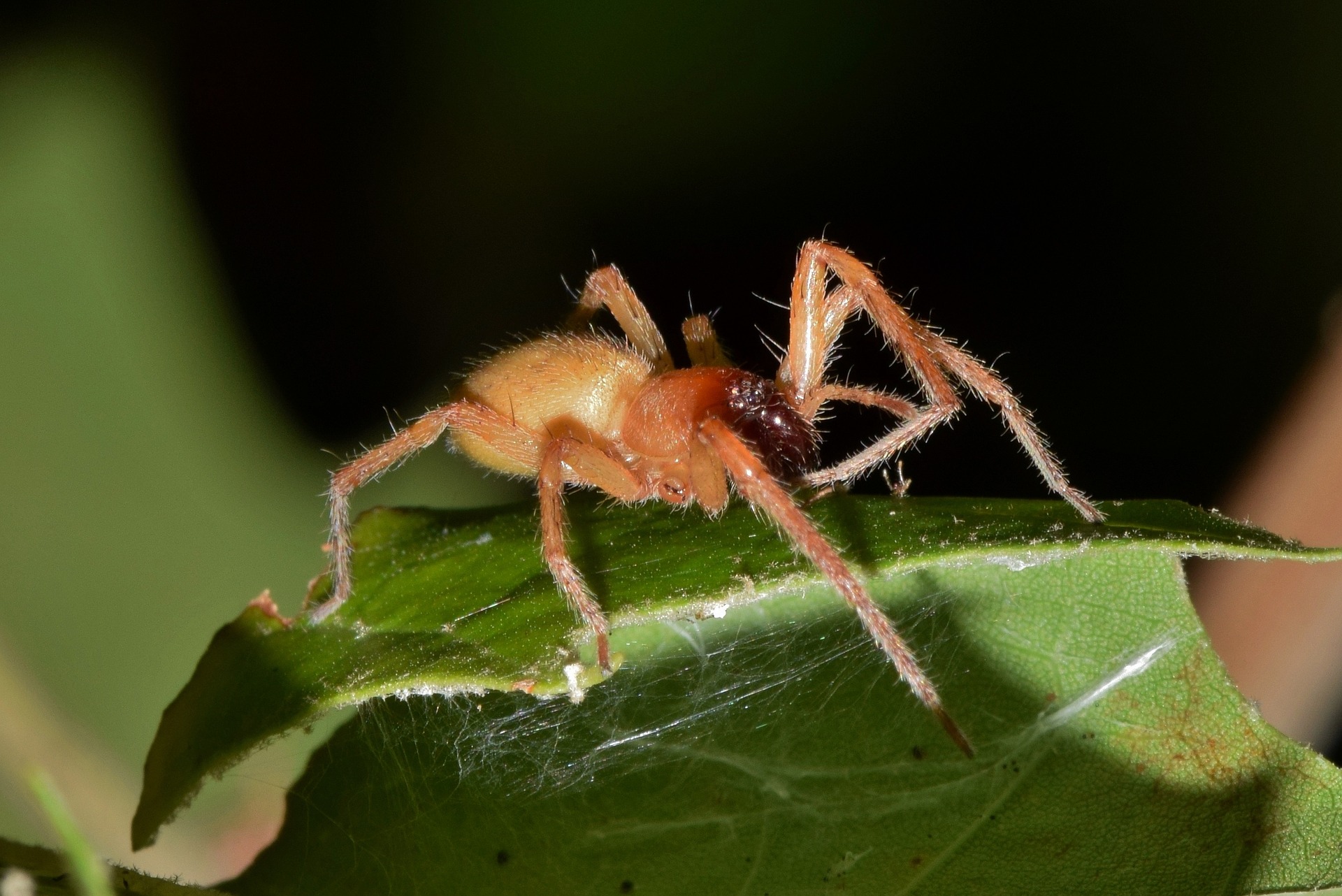
This spider has one hell of a bite which leaves you with swelling, rash, and burning. Its also vicious and can attack unprovoked in some cases. If you are bitten, make sure you place ice on the womb until symptoms decrease.
You won’t see many in the day as this spider likes to hunt at night when things cool down. It’s also tiny but distinctive with its intense yellow color.
The females can lay up to 48 eggs which are protected by a thin layer of silk before hatching. As soon as the spider leaves the egg, they get straight to work, making silk and eating ready for the generation of eggs.
Indochinese Tiger
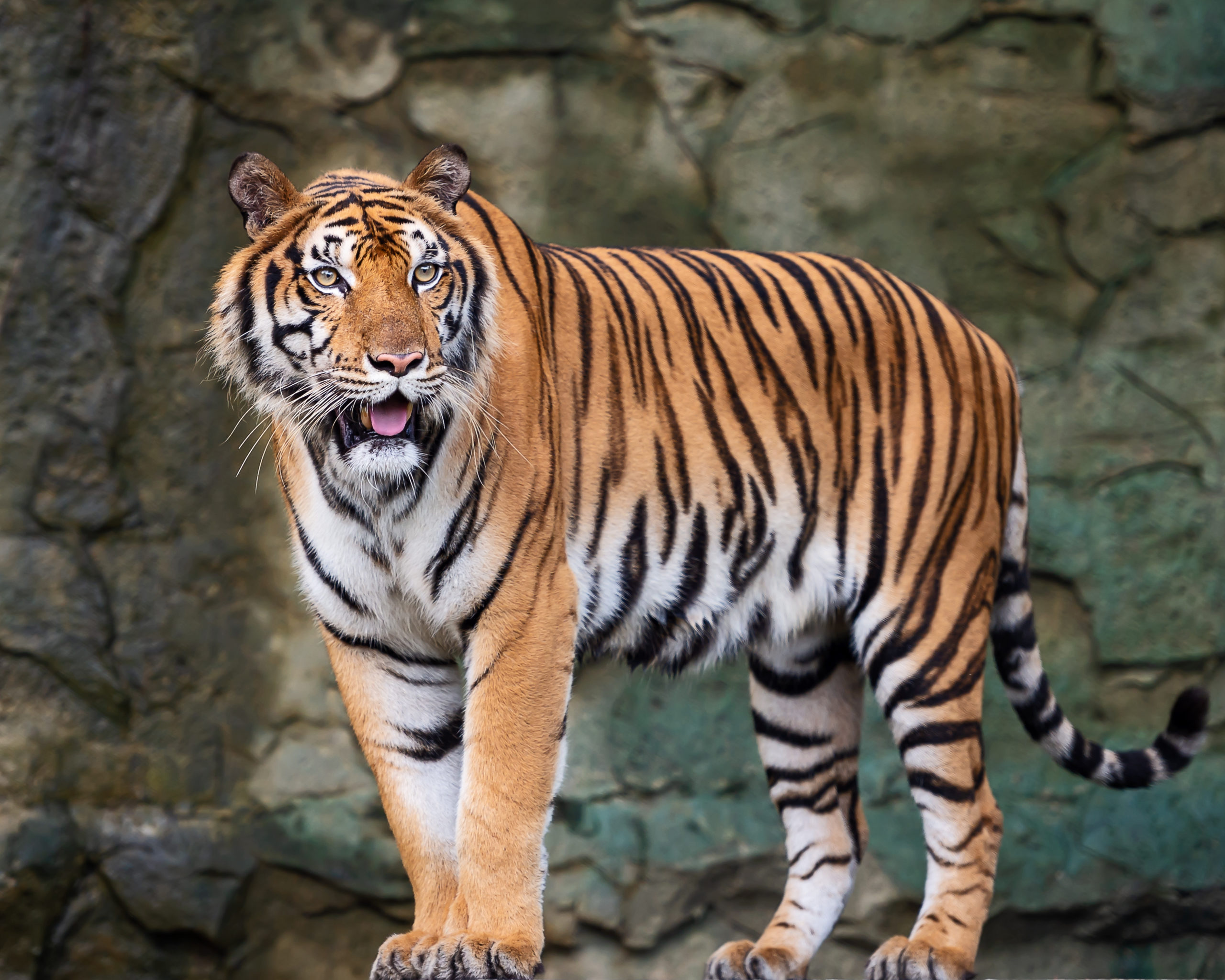
One of the most beautiful animals globally is the Indochinese Tiger. The tiger doesn’t go after big prey or humans in most cases, but it will defend cubs or its territory if needed!
You don’t want to get on the wrong side of them as they have powerful jaws, we’re talking twice as powerful as an African Lion! But your chances of meeting one in Vietnam are incredibly slim as the population is significantly low.
Clouded Leopard
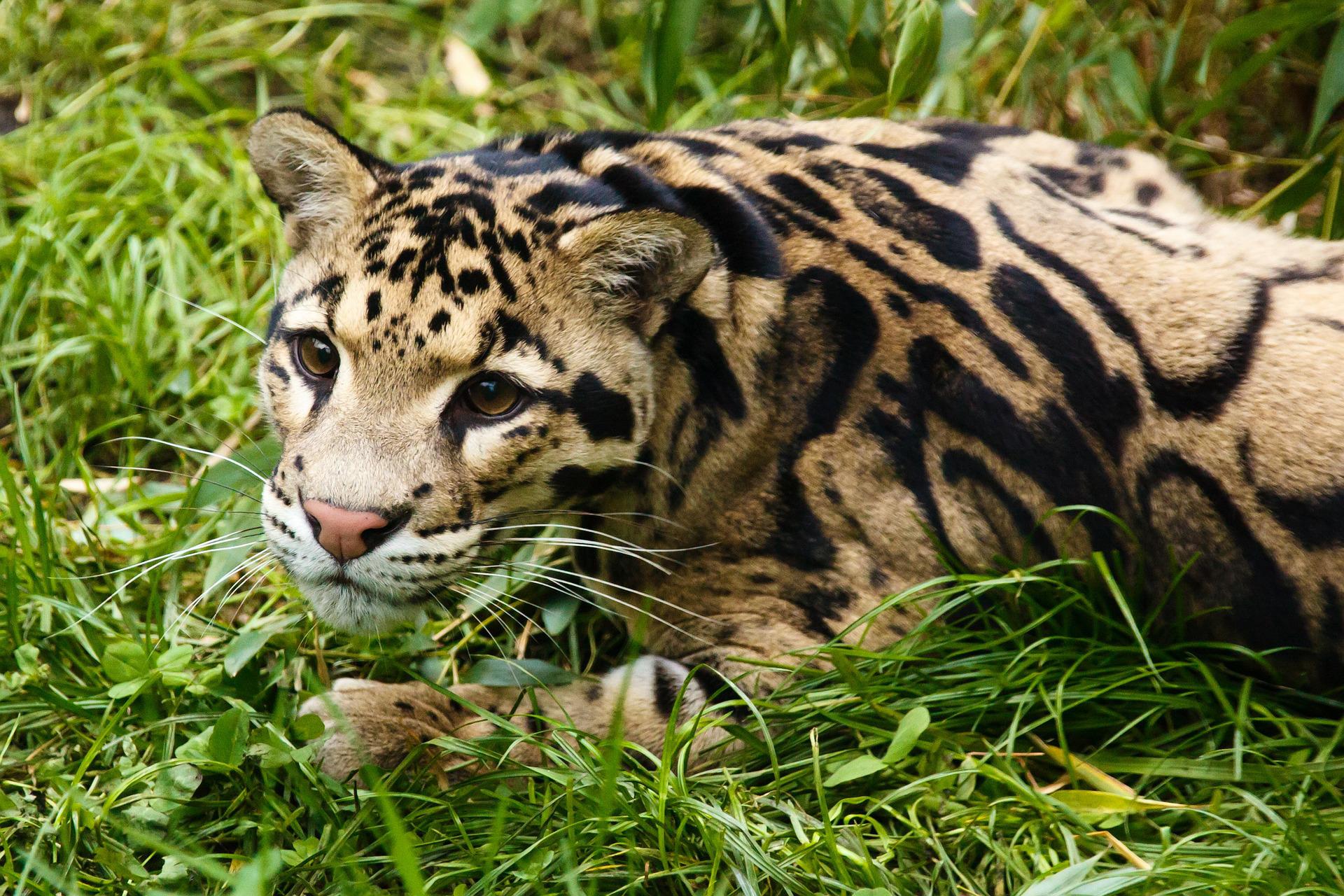
An animal of great agility is the clouded leopard, with its wonderful climbing skills and ability to hunt prey. One thing for certain is that you will hardly ever see this animal in captivity as there are insufficient numbers in the wild.
There’s a possibility to reintroduce leopards back into SEA through captivity breeding programs – Hopefully, in the future, we’ll see Leopards in the wild again!
Gaur
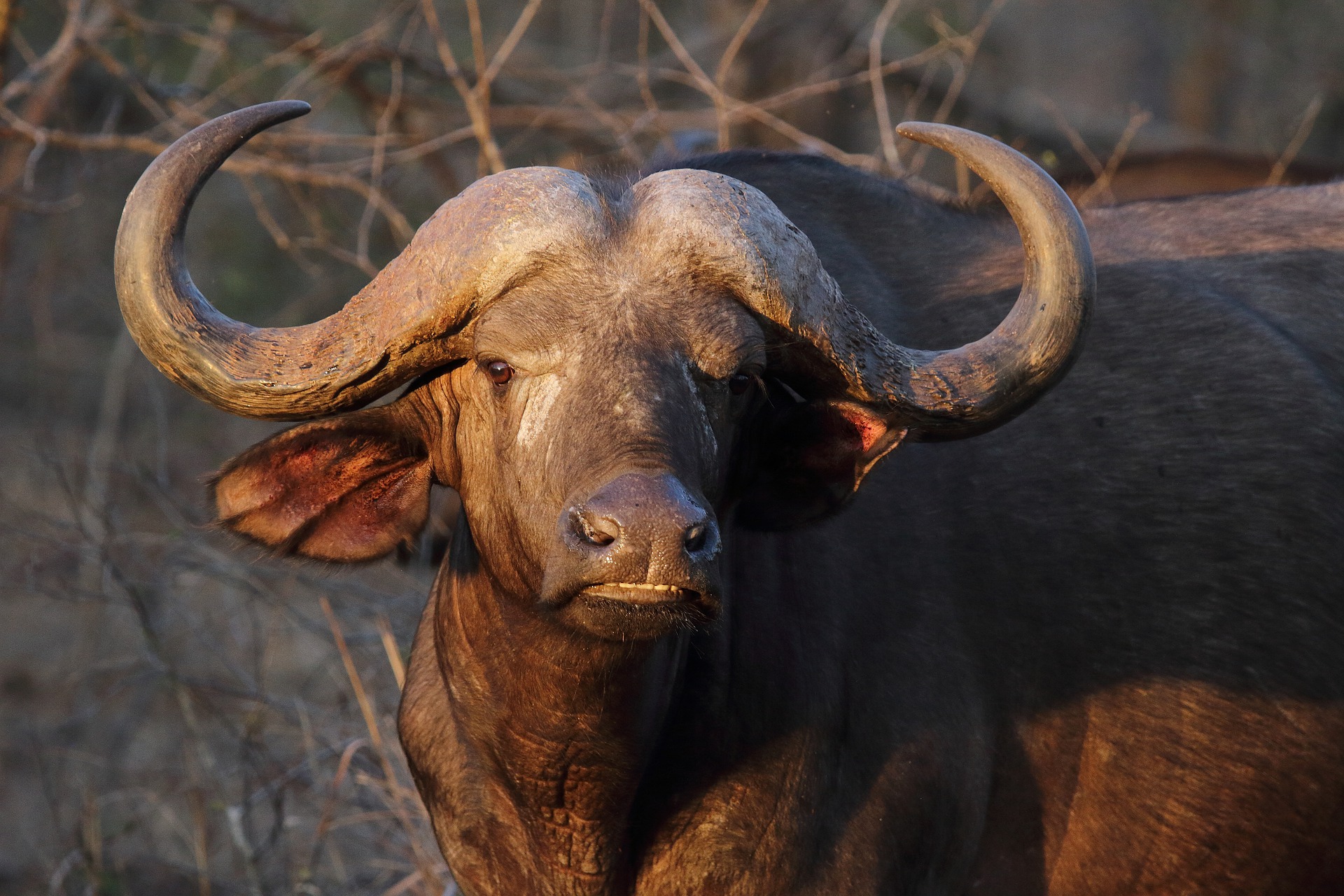
A proper beast of a mammal is the Guar (Wild water buffalo) which has some of the biggest horns in the animal kingdom. You can find these animals from India to SEA, but due to their exploitation, numbers have dropped a lot, we’re talking 70% in the last 50yrs, which leaves around 21,000 left In the wild.
You can find the Guar at Ea So Nature Reserve, Yok Don, and Cat Tien national park. If you go to see these wonderful beasts make sure you keep some distance. You don’t want them charging at you at 30mph weighing over one tonne! But for the most part, these animals are calm and peaceful, and you won’t have any problems.
Russell’s Viper
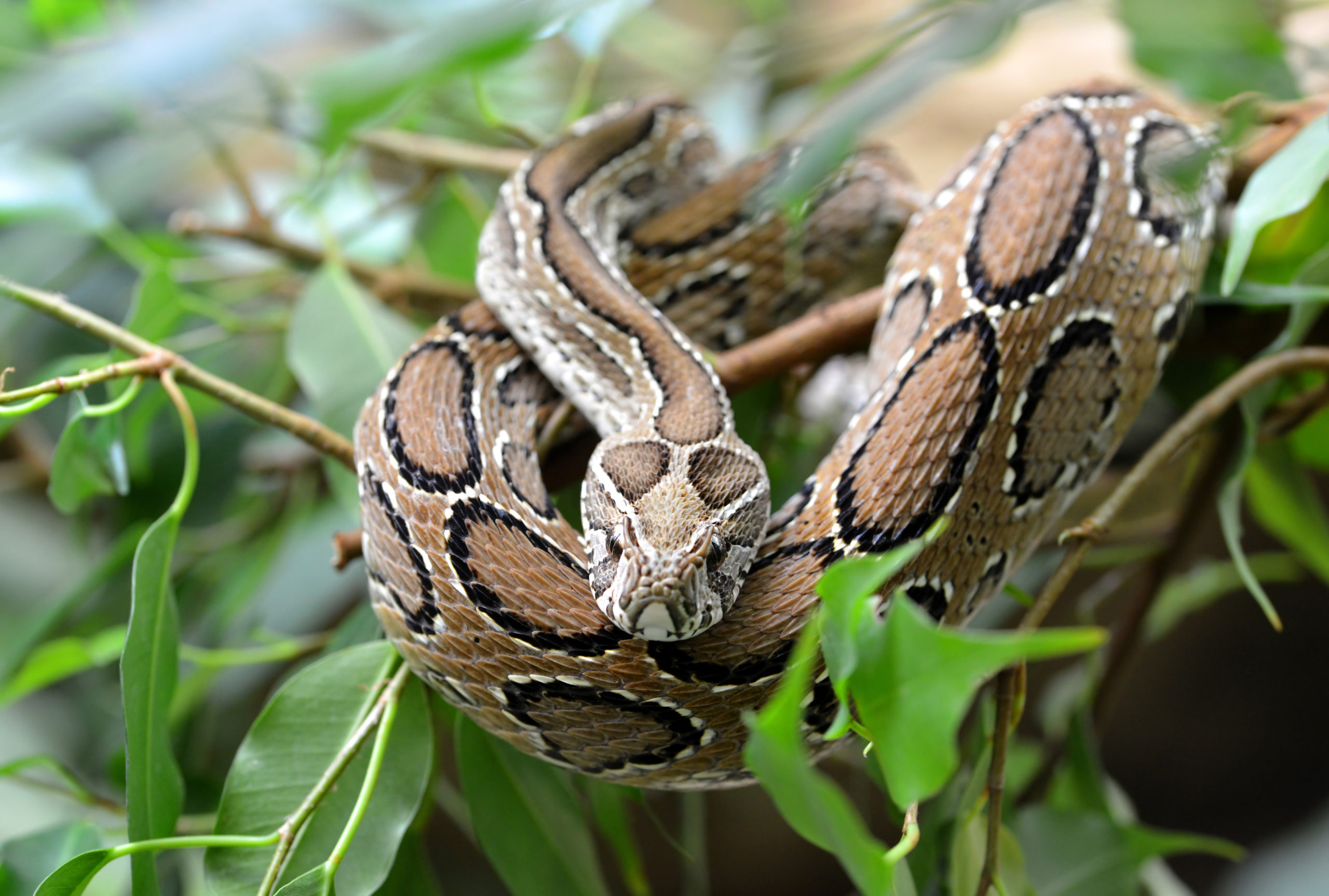
The Russel viper is no joke and shouldn’t be messed with. This snake caused many deaths last year and knows how to defend itself. The sad reality is this snake isn’t from Vietnam, but since its arrival has become one of Vietnam’s biggest killers.
If the frightening reality of getting bitten by this viper occurs, then you may experience swelling, sickness, nausea, and kidney failure. Get yourself to the hospital ASAP!
Jellyfish
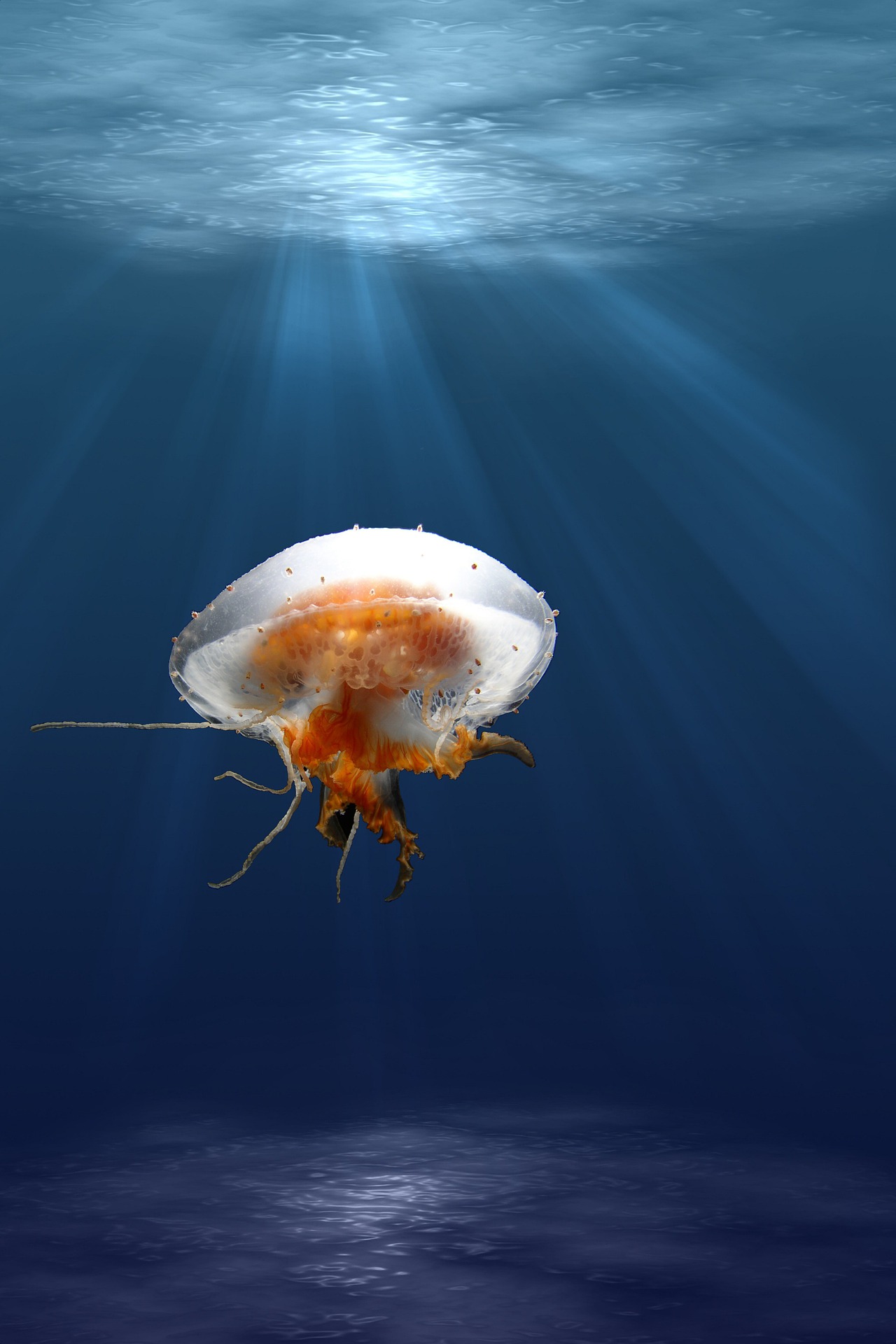
Vietnam has some insane beaches and beautiful water sea temperatures to relax and swim in. Still, some dangerous creatures are lurking under the water, especially on the coast of Phu Quoc.
In certain seasons jellyfish thrive, and thousands can float around the Vietnamese coastline. People have been known to get serve wombs from jellyfish stings, so keep yourself vigilant before you swim.
Golden Jackal
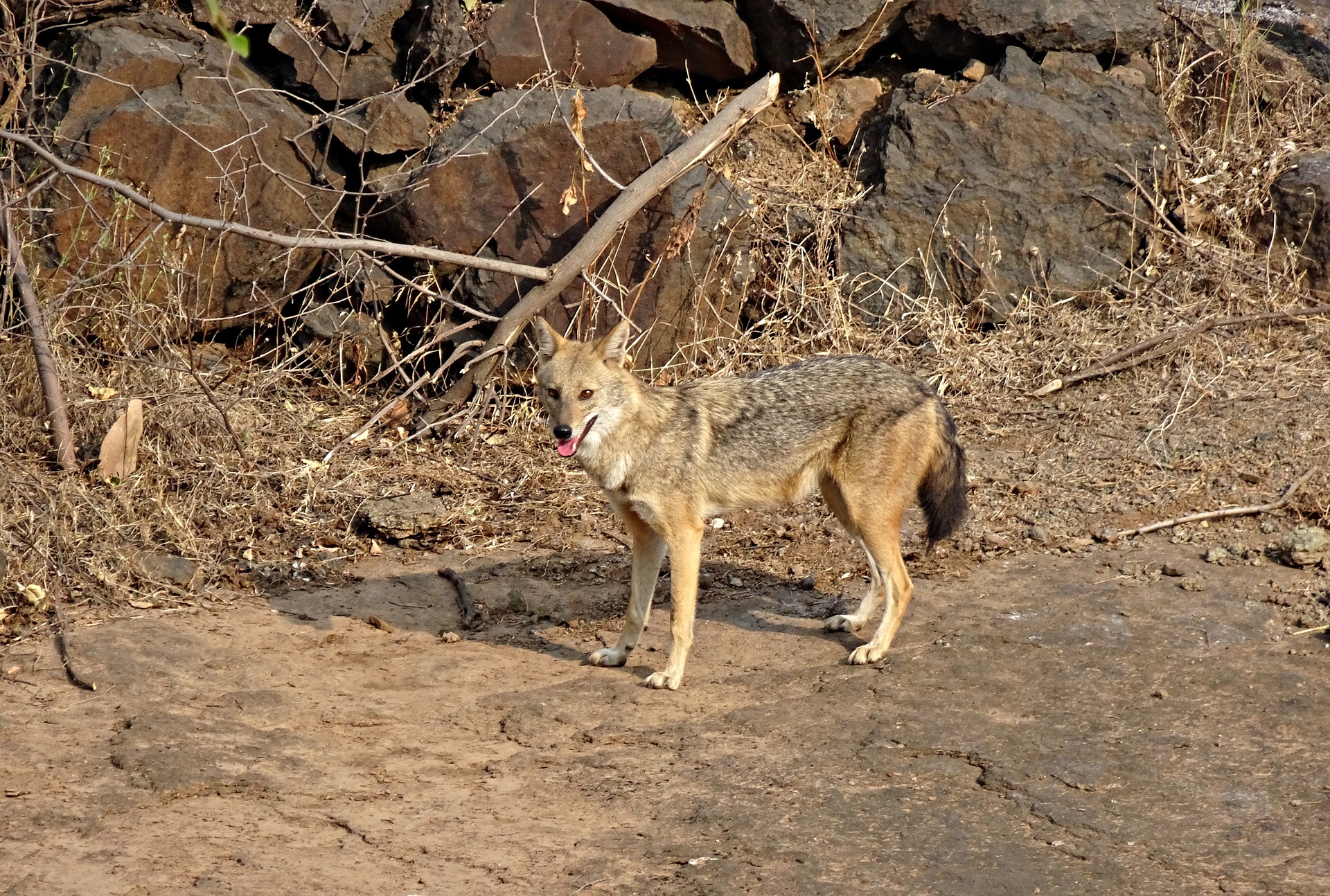
Coyotes and Jackal’s usually are fluffy and cute, and all you want to do is pick them up and cuddle them. The only threat would possibly be small children who are a similar size to their prey. So always keep an eye on your kids.
King cobra
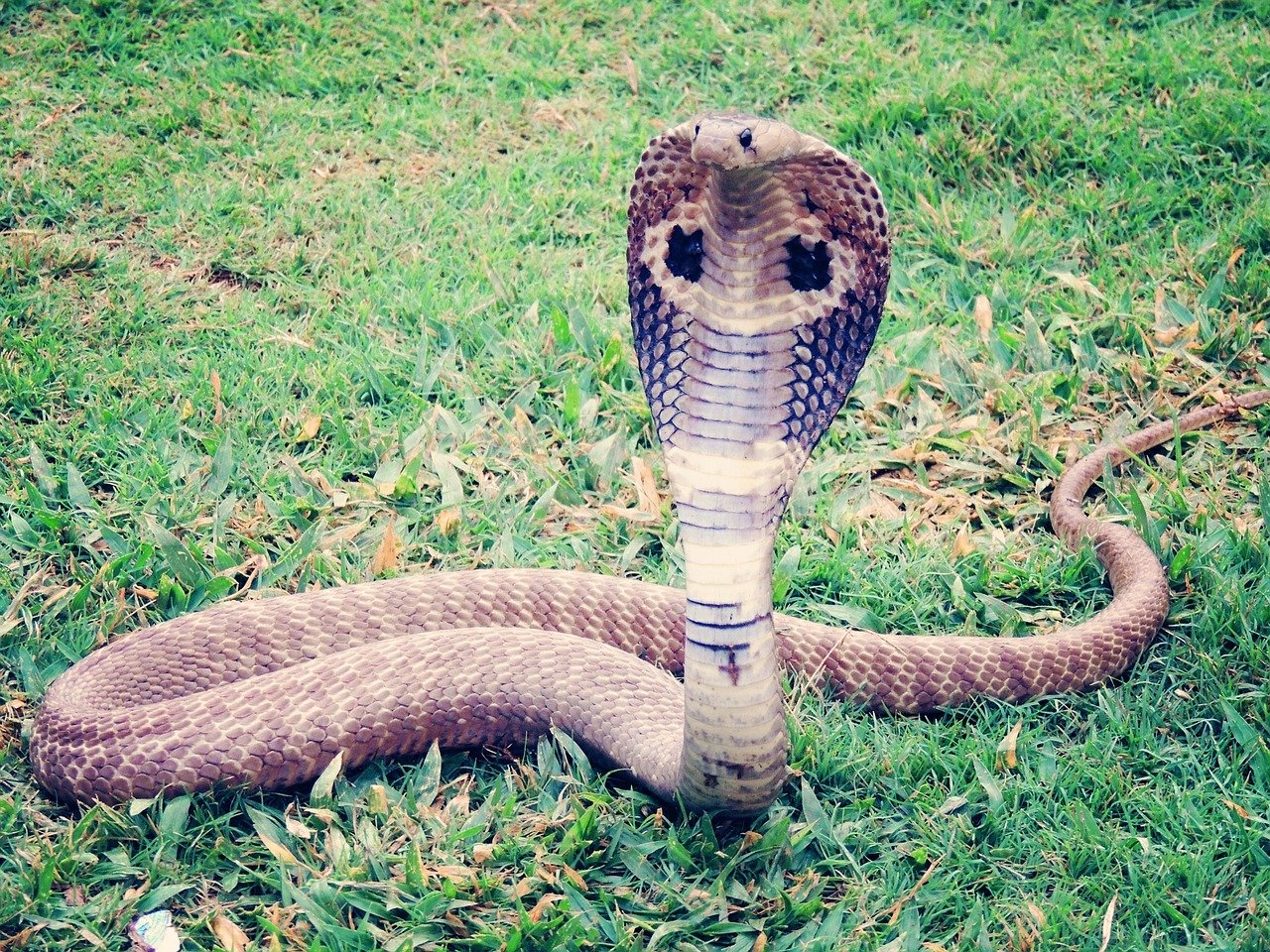
One of the most well-known snakes resides in Vietnam and is found from the west in Burma to Borneo. One positive is their not as high in numbers compared to previous years, and encounters are rare and never hardly in the cities.
This snake has the reputation as one the standout snake out of all snakes in the kingdom. The cobra’s size can reach 5 meters, and they usually reside in lush, fertile forests and eat other snakes and rodents.
Their iconic defensive position is the stuff of legends with its hood flapping out and amazing reflexes. You don’t want to be bitten, as 28% of bites lead to death by the toxin shutting down your vital organs and putting you in a coma.
Asian Black Bear and Sun Bear
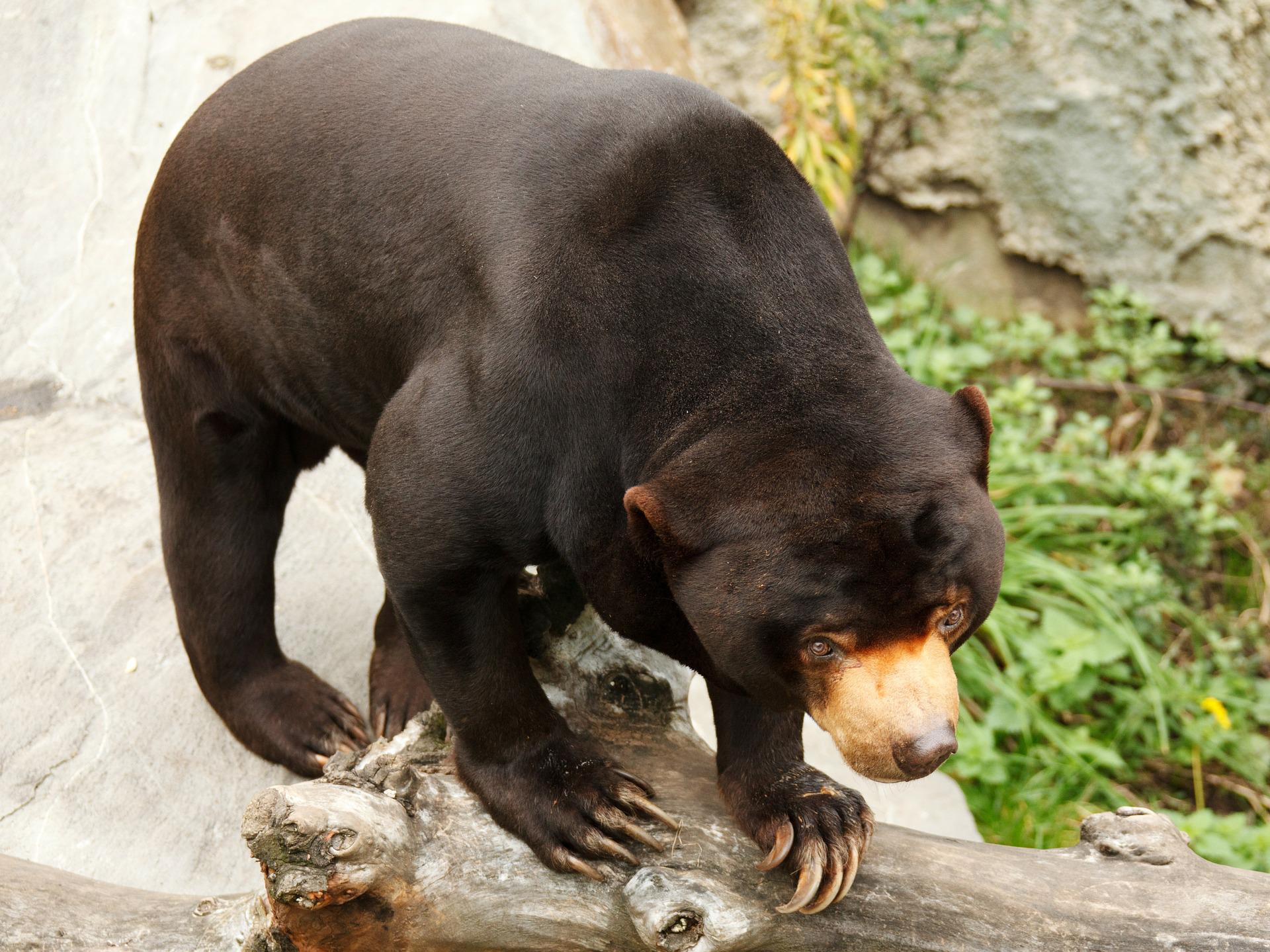
Perhaps one of the most frightening animals on earth is the bear, with its sheer size and frame running at you at a great pace and throwing you on the floor, ragging your face of!
Most bears will try and avoid you and will only get their back up if you’re in their territory and with cubs. If you plan to go hiking, do your research about what to do if you encounter a bear. You might not get a second chance.
Wild Boar
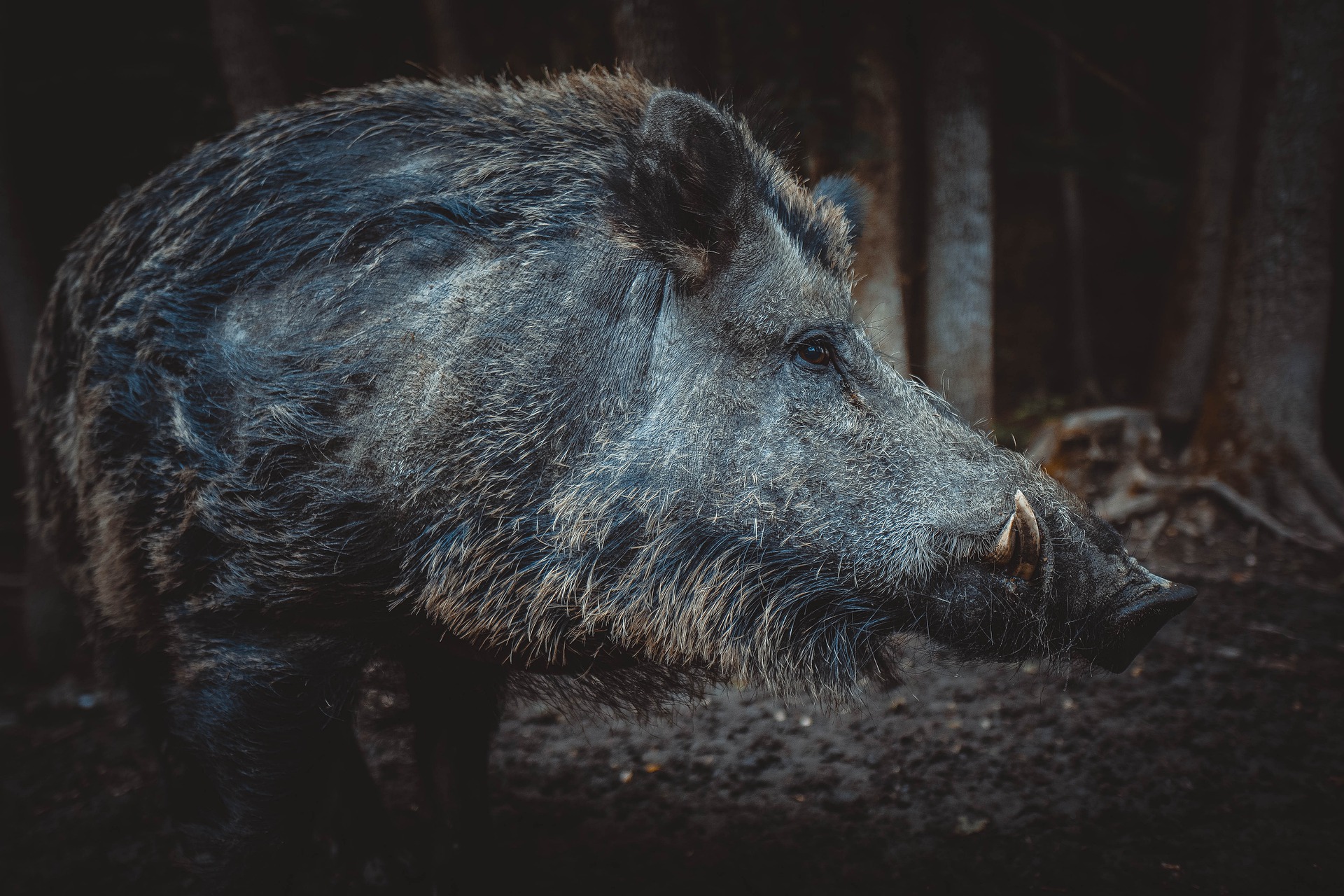
Wild Boars are pretty ferocious animals and kill more people in the US than Sharks in Vietnam. Their a lot stronger than you think and have big tusks. While these animals are much like fight-or-flight animals and don’t necessarily look for trouble, they will defend themselves if they think you’re a threat. They also carry zoonotic diseases, which can be transmitted to humans.
Red-headed krait
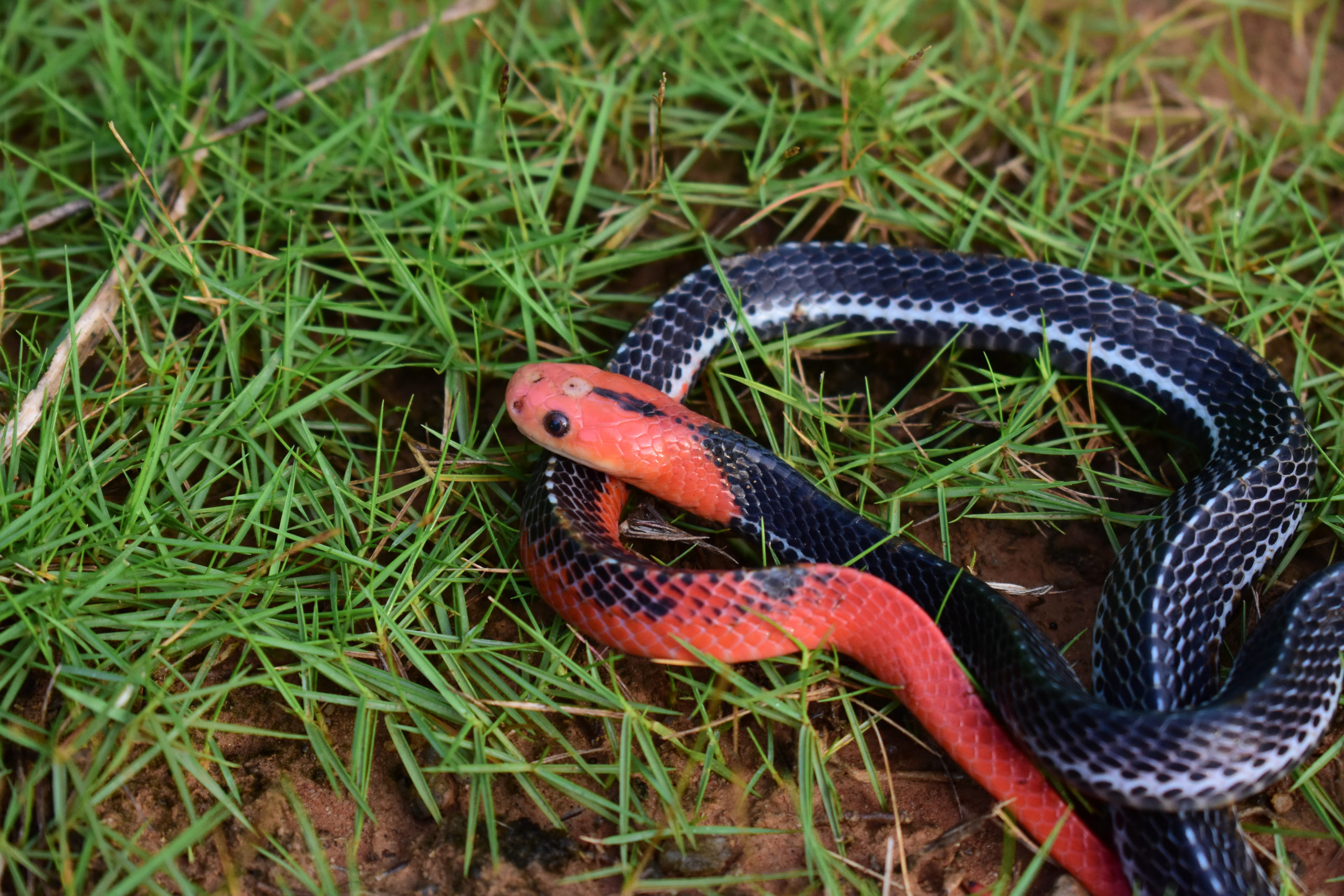
It is probably one of the most beautiful and distinctive snakes globally with its unique colors and camouflage. The snake has a scarlet head, making it stand out compared to other snakes, but it also likes a swim living a semi-land/aqua life.
The snake lives in the hills of northern Thailand and the islands of Vietnam in the South China sea and are extremely rare, with only a few spotted compared to other snakes, but this snake has is highly poisonous, and a bite will give you symptoms like nausea and hypersalivation.
One positive is that you are highly unlikely to bump into one of these snakes, especially during the daytime when its chilling in the forest.
Fea’s viper
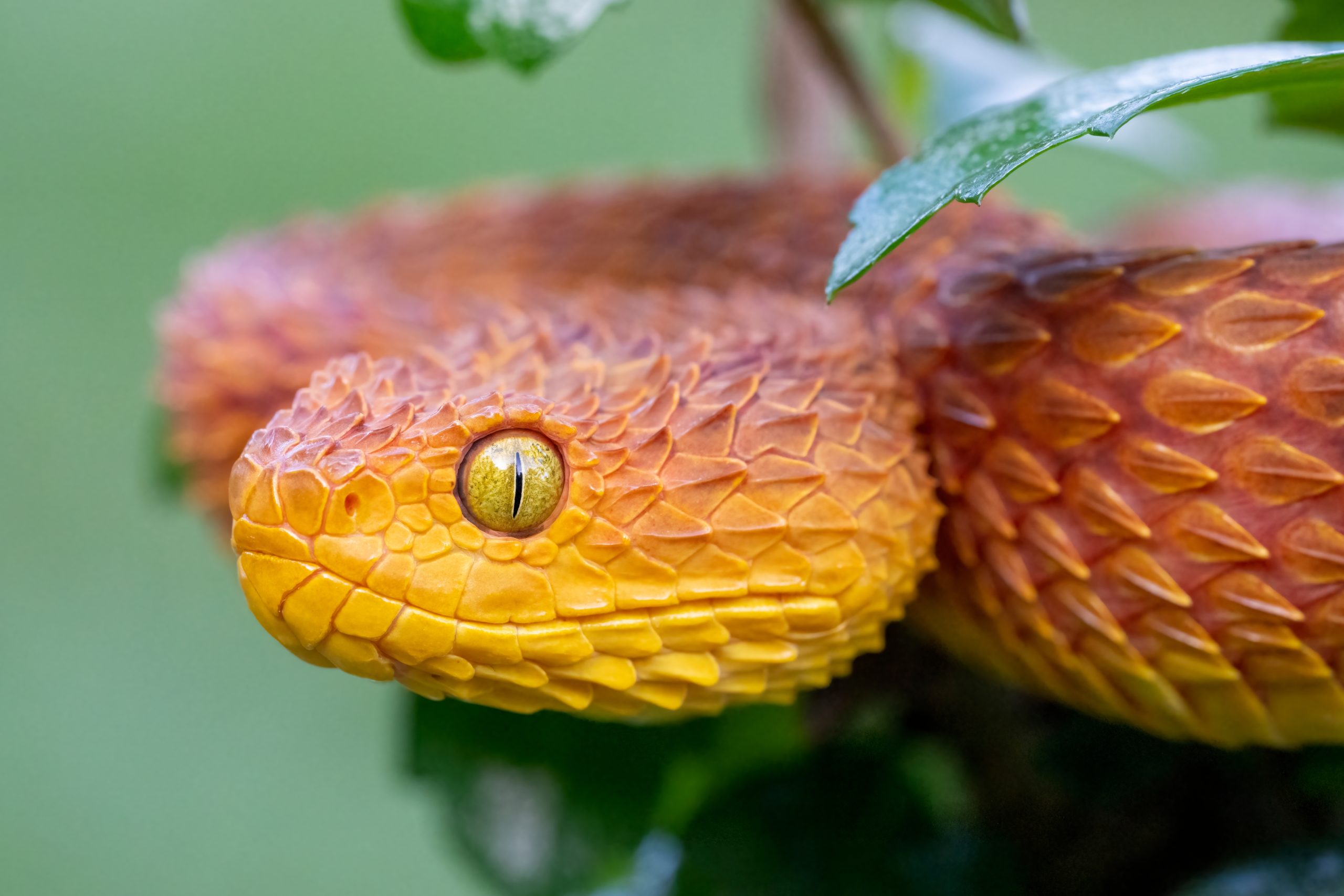
The Fea’s viper has an amazing camouflage of dark purple & black and can grow up to 80cm in length. The head is still V-shaped and is pretty large compared to the rest of its body, but it may look slightly different but is a viper.
The Fea’s viper gets its name from an Italian explorer who spotted the snake in Burma in the 1800’s. The snake prefers to live in high climates between Burma and the South China sea. Its also a bit of an unknown quantity with a venom not known how deadly it can be with not enough bites recorded.
Sharks
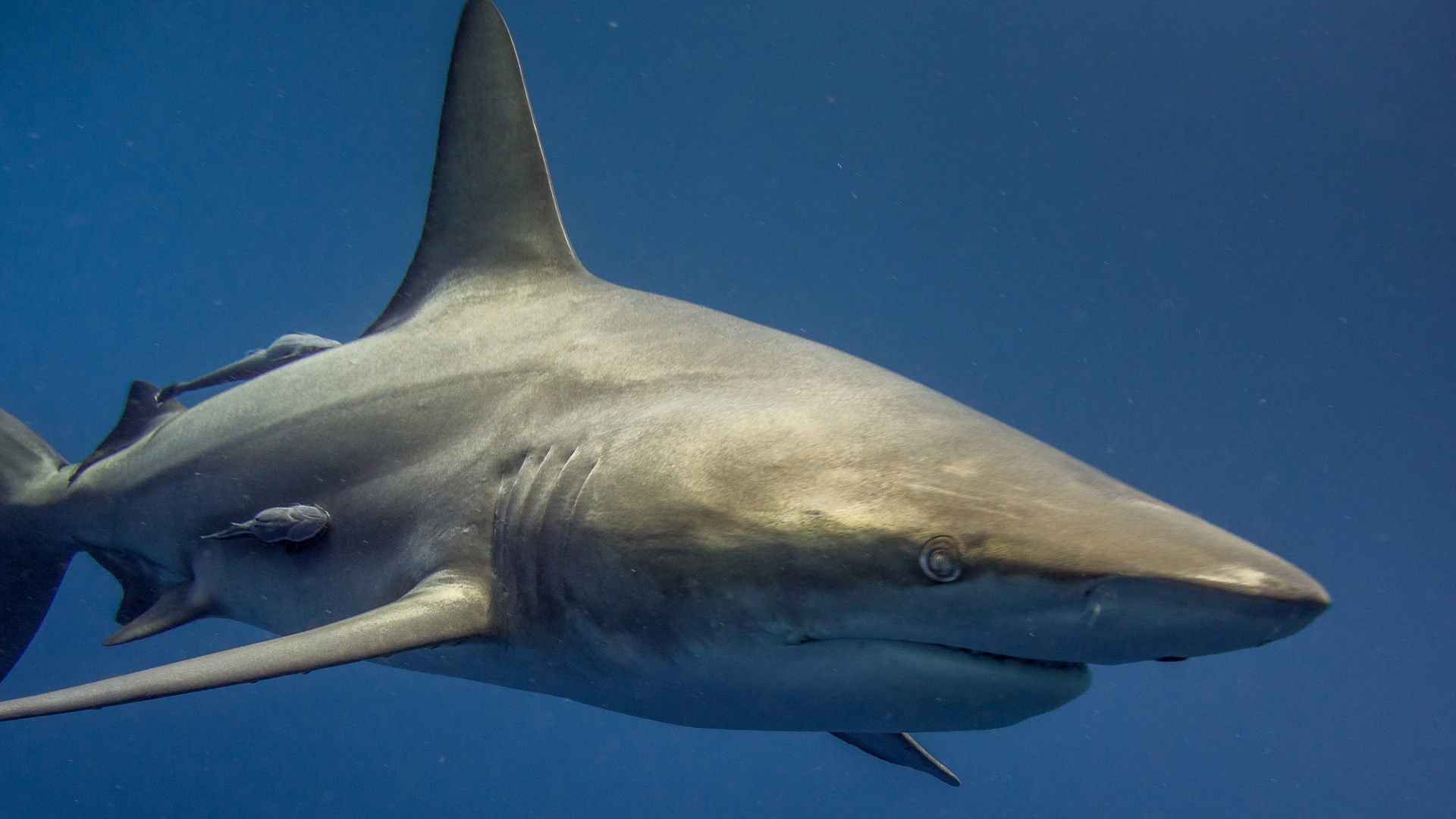
If you hang around the South China Sea, you will see loads of sea life as the water doesn’t drop under 20 degrees. People who go to the beach expect to see Sharks, and these amazing, powerful creatures are around.
Like snakes and other species, there are loads of different types of sharks in the South China Sea, but you will have to go out to open water. Sharks won’t come to low-tide beaches where people are shouting and playing around.
You’re chances of getting attacked by Sharks is nearly zero in Vietnam, so don’t be concerned!
Rabies In Vietnam
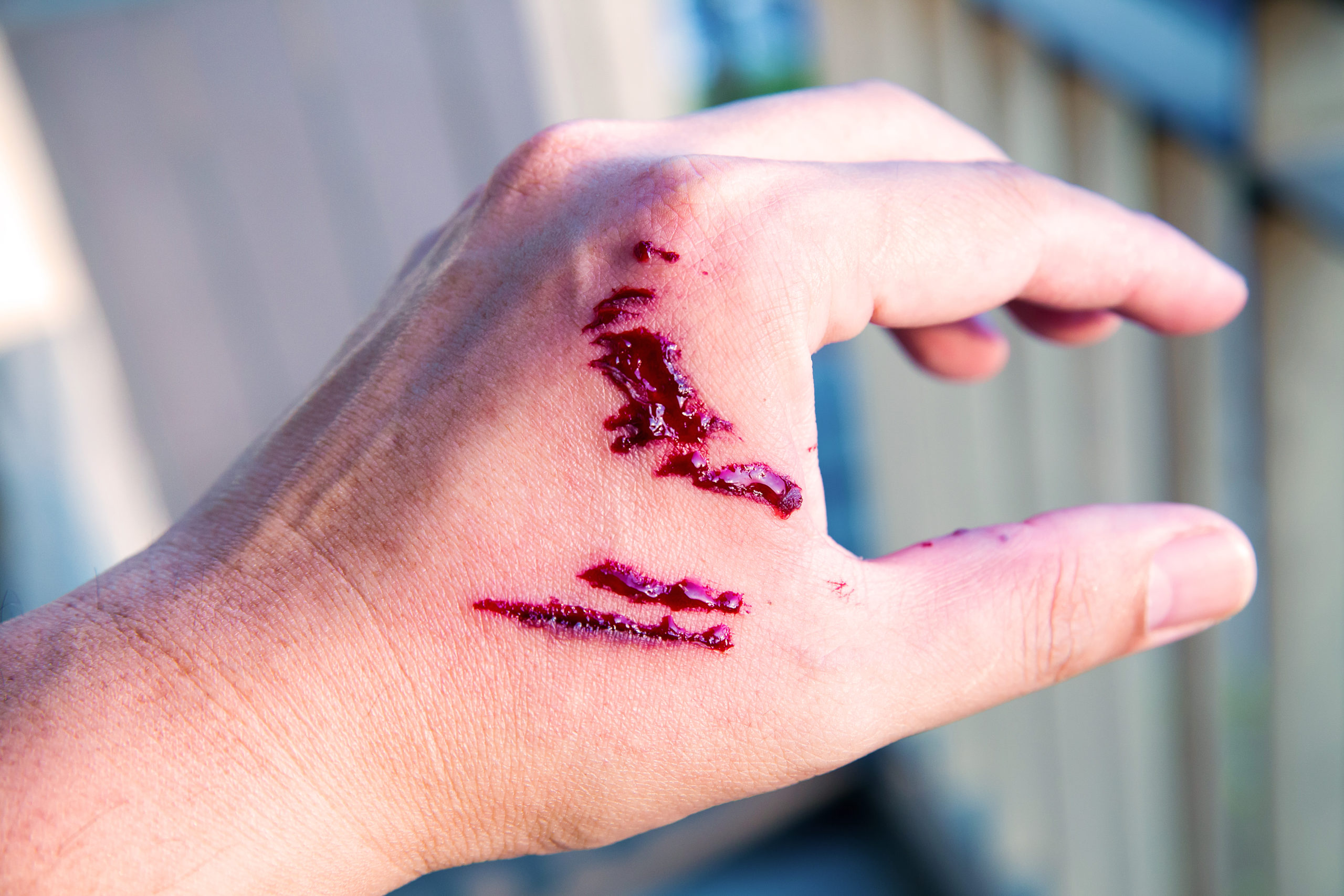
A large portion of rabies cases happen in Africa and Asia, so if you live in a developed country, your chances of catching rabies are next to nothing. There are around 59,000 deaths worldwide every year.
This horrible disease is largely controlled via vaccinations, and also, getting your pets vaccinated helps massively keep the spread down. Also, if you have been bitten, you will hopefully have access to PEP for treatment which you need within 24hrs.
The figure for deaths in Vietnam from 1991/2018 was 4,234. That number meant Vietnam had to look at its rabies programs. From 1996 Vietnam Dr’s and Scientists gathered more data through communication with the population, mass dog vaccination, measures against dog attacks, general surveillance of rabies victims, PEP assistance, and widely available vaccines. Due to this program, today, Vietnam has 95% fewer cases.
Health surveillance helps you plan your next move in your fight against the disease. Data gives you the information you need to find out how big the task at hand is and where to start rabies from spreading. In 2014 Vietnams ministry of health passed national guidelines for control and prevention, but today the service hasn’t formally been assessed.
Wildlife Trafficking
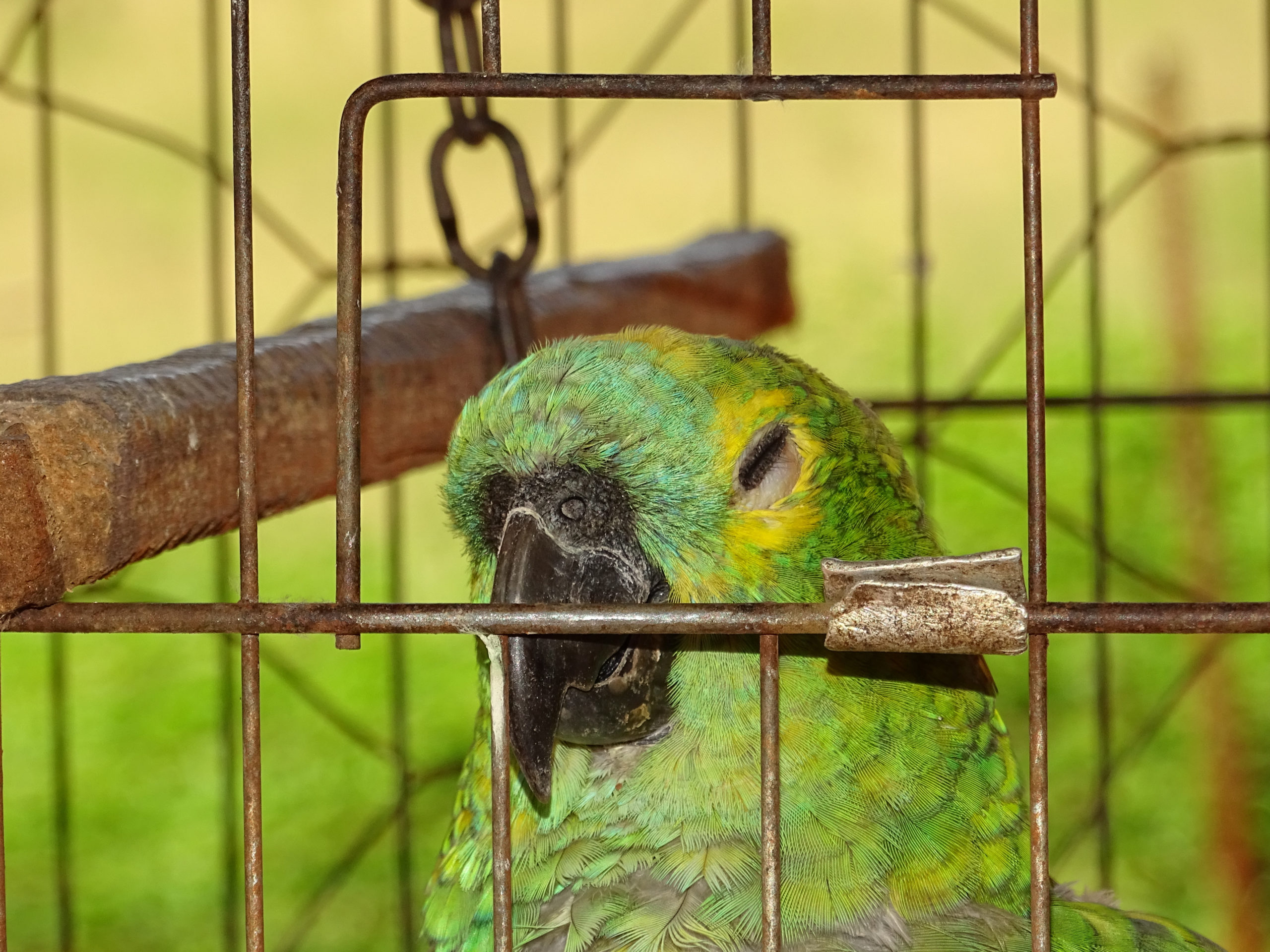
Wildlife Trafficking is sadly still big business today, with only one conviction out of seven busts in Vietnam. Sadly, this shows the big holes in law enforcement with wildlife poaching and the amount of change needed in tackling Wildlife Trafficking.
One of the concerns is with the global downturn is that wildlife poaching is coming back in a big way in Vietnam! Especially when many cases haven’t been tackled in the right first place. The pandemic has made it harder for poachers to operate, but international transfers flourished with an adapting market to the pandemic.
Many wealthy Vietnamese citizens have purchased Ivory tusks from Africa, which can be sold openly still in Vietnam. Recently there have been significant seizures in Africa, with 19 tons of ivory and pangolin scales linked to Vietnam.
Vietnam crimes networks operate in Africa and have been their for a while, with Nigeria, South Africa, and The Congo being hot-spots. The Vietnamese gangs have been behind the illegal trafficking of 18,000 elephant parts and 976 rhino parts exported from Africa. A lot of the rhino tusks came from Kruger National Park, which has caused the rhino population to drop.
In 2015 138 kilos of rhino horns (From around 50 rhinos) from South Africa were seized in the port of Da Nang, which was the largest since 2015. The sad thing about cases like is theirs no real follow-up from the Vietnamese police, and no arrests are made.
Vietnam is making seizures but its not getting convictions, which doesn’t put the organized gangs. Also, many seizures are just a fraction of what gets into Vietnam. The Vietnamese police don’t regard poaching as not a big enough crime to communicate, plan and invest in.
One of the biggest animals poached globally is the Pangolin, a beautiful, friendly creature that just curls up a ball to protect itself from predators. The fact there widely considered as medicine gives them a higher value and target on their back.
In the hope of bringing in more effective collaboration with countries internationally, a report has suggested that Vietnam works with Africa, Cambodia, Malaysia, Singapour, and China to gather mass data that gives you an indication of the scale of the problem. If the police knew about the massive money laundering involved, bribes, and tax evasion, they would probably want to bring that empire down as it’s a pretty scummy business.
Vietnam has moved forward to tackle the illegal wildlife trade in the last few years, with a 44% seizure rise and penalties being dished out more.
Vietnam started a National Ivory and Rhino Action plan committed to seizures with local source countries. But cooperation has been slow between the countries.
Climate of Vietnam
You find that the northern part of Vietnam goes near the tropical zone, and January is the coldest month. Hanoi’s mean temperature 17°C, and the annual temperature is (23 °C). If you head down south, the annual temperature jumps to (25°C). The winters in the north kick of from November to April, and it rains a lot from Feb-March.
The summer in northern Vietnam starts from April to October and has a lot more intense heat, spells of heavy rain, and typhoons. The south monsoon season starts between June/November, with possible Typhoons coming from the lower plains.
Plantation and wildlife
You find a wide range of plants and trees all over Vietnam which compliments the climate Vietnam offers. You can divide the forests into two parts: Evergreen, which has everything from conifers to 1,500 different species of plants. The other plants you find is bamboo, vines, hardwood, and palm trees.
If you head to the mountainous regions, you can find plants like Quercus (Oak), Castanopsis, Pine, bamboo, and tall grasses.
You can find dense, thick green forests and lush evergreen jungles in the central regions of Vietnam. The type of forests you find here are mangrove forests, barren dry land with plenty of sand, and savanna vegetation. Don’t be surprised if you find a few swamps also.
During the Vietnamese war, the US army used herbicides to de-Forrest large areas in the south of Vietnam. Many of these forests have been restablished, but illegal logging has come into play in the last few years.
In Vietnam, a lack of government regulation, experience, and skills has resulted in poorly managed facilities. As the number of zoos and captive animal facilities increases in Vietnam, our work helping to address poor animal care and welfare standards have never been more urgent.
Vietnam’s Zoo’s
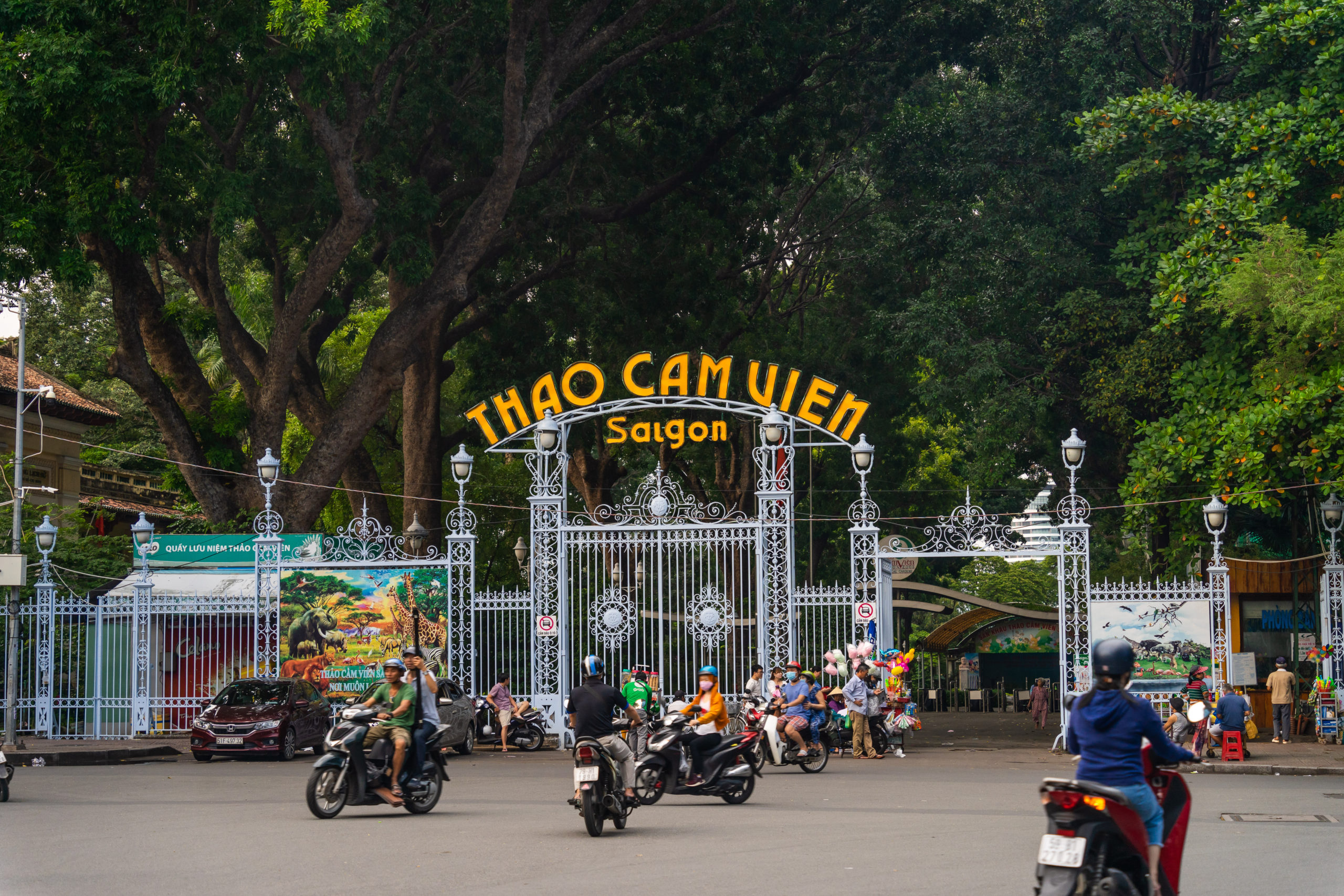
As Vietnam becomes richer, it is starting to tap into more leisure and entertainment activities, and Zoo’s are big business. I’m all for animal welfare and normally flat out against zoo’s, but when a country has a dyer animal rights record, they do serve some good for captive animals. A zoo’s positives are educating the local population and highlighting the importance of conservation work.
In partnership with the Vietnamese zoo’s (VZA), Wild Welfare provides animal living standards and expectations for looking after the animals’ welfare. Wild Welfare now works with 20 zoo’s in Vietnam and helps maintain a welfare program that hopefully will become the standard in Vietnam moving into the future.
The future seems pretty obvious that the Wild Welfare program will become an integral part of Vietanmes zoo’s. The organization hires volunteers to help and assist with zoo’s many issues and challenges that may arise. One of the greatest assurances is education programs that develop better attitudes towards animals in the future.
Aquariums in Vietnam
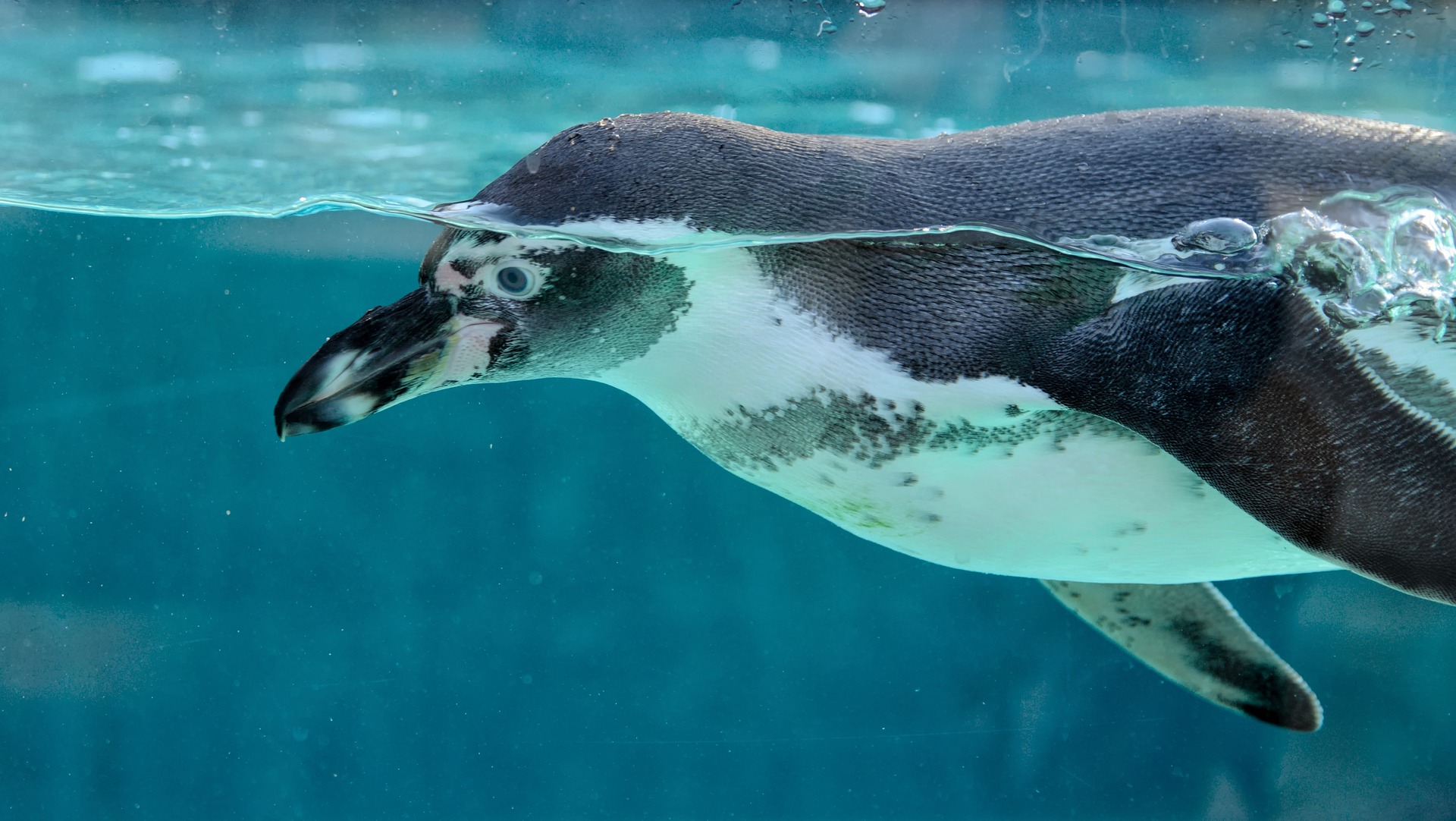
There are many good quality Aquariums in Vietnam as local people just as tourists enjoy watching wildlife from a great view.
Tri Nguyen Aquarium- Nha Trang
This mysterious Aquarium is around a 20min boat ride from the mainland to Hon Mieu where you have to the main attractions Bai Soi Beach and the Aquarium. The Aquarium design is like a fossil decorated in moss, and once inside, you walk into a mini ocean of beautiful fish. Most exciting fish live in the coral, and you have an outdoor section (Lake) and an indoor section.
You find the lake has glass surroundings that give you a clear view of everything lively in the Aquarium. The second floor sells merch which is perfect for gifts for memorabilia. The 3rd floor has a lovely fresh sea-food restaurant (Hopefully, the fish aren’t from the Aquarium) and lastly, on the deck is a mast and cannon.
The actual lake in the Aquarium’s water level is on par with the sea, which makes it feel vaster. The outdoor lake has a variety of fish with Mackeral, squid, tuna, stingrays… large squid, and lobsters all chilling around the coral. If you like fishing, then check out the small huts around the lake. While on the lake, the ambiance is pretty cool, with flora and fauna floating around the palace.
The administration fee to get in is 20,0000 VND for adults and 10,000 VND for children. Or you can just swim around Bai Soi Beach and check out the lake for 5,000 VND. Interestingly enough, the beach doesn’t have sand (gravel) but is a great place for swimming.
Aquarium in Nha Trang
This Aquraiunm is a bit of a beast and is nicknamed the “mini ocean” with a staggering 3,400 square meters of area. Incredibly the Aquarium has over 300 species, with creatures from around the world. The theme of the areas are north Asia, South Asia, Amazon, and coastal areas, which are spread out over two floors with a cool manufactured mountain to gaze at.
You get the feeling you are lost under the sea-bed in a sea of mysterious sea creatures, but you also have entertainment from performers acting like mermaids.
The opening times for the Aquarium are 09:00 to 21:00
Aquarium Times City Hanoi
This Aquarium is a record-breaker in terms of scale and is more prominent than its brother In Nha Trang. The venue is state of the art with many modern features to admire wth a huge 4,000 square meters and 30,000 species from across the globe. You also have a 300-meter path underneath the Aquarium to wander around while in view are cute penguins chilling on an Oasis.
This Aquarium is unique in the reptile area, including amphibians and tropical insects. You also get to see hundreds of fish from China, Japan, and the pacific ocean. This is a great place to take children as it educates kids on conservation work and general ocean facts that will keep you entertained for hours.
Aquarium Saigon
With a solid 3,000 square meter area, Dam Sen Aquarium is the biggest in Vietnam. The venue has over 6,000 species of fish, 40 floral, and 150 fauna to admire on your walk around. Many of the fish here are more local, with many of the species on the edge of extinction. The Aquarium takes you on a mini journey where you view loads of color and educational traits to keep you entertained for hours.
Animals close to extinction !
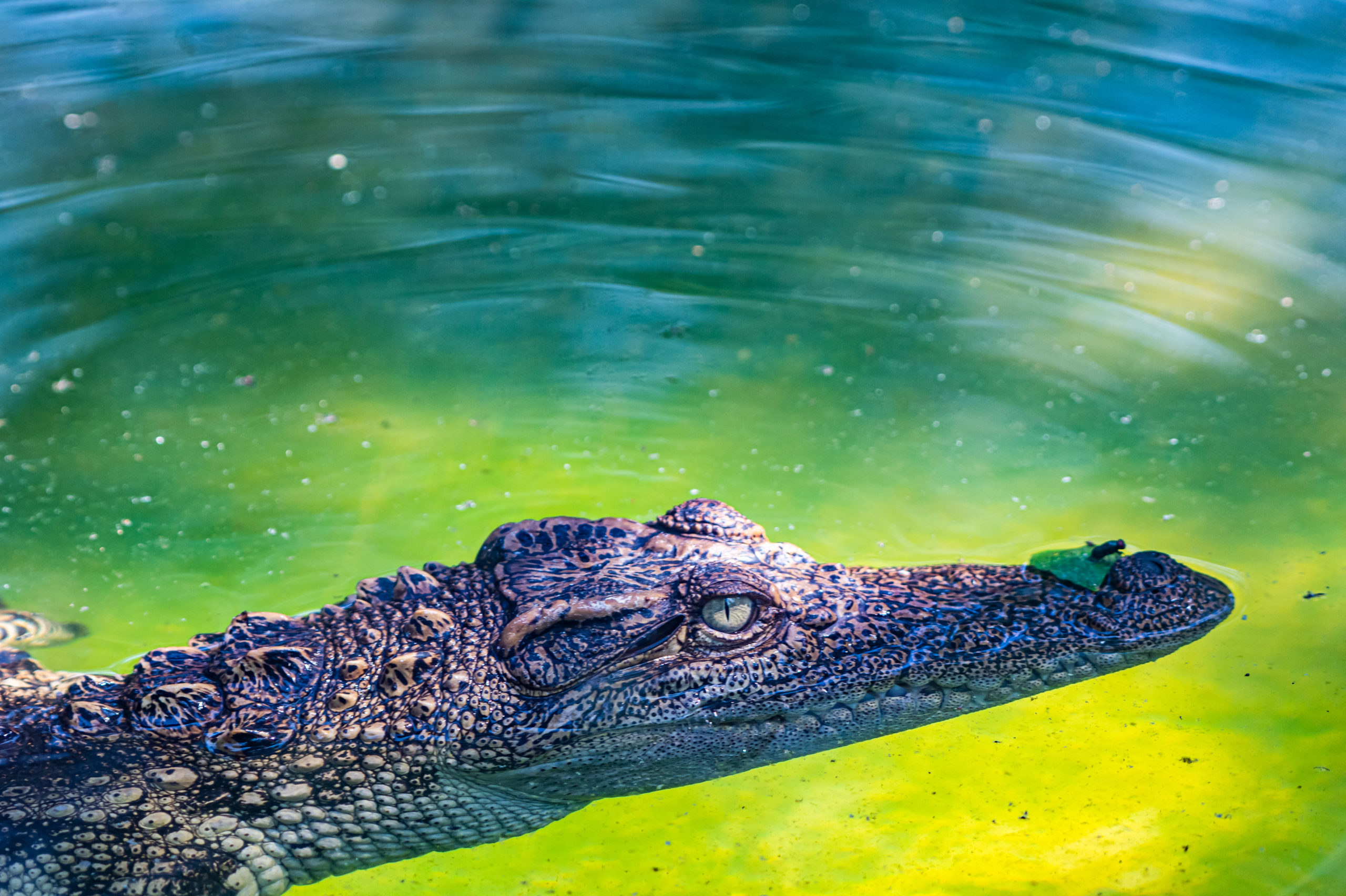
Vietnam is an animals haven with lush biodiversity, jungle, forests, beaches, and highlands for various animals to live. But sadly, due to human intervention and the effect we’ve had on the natural areas in Vietnam, 300 animals have vanished, and 100 are in threat of extinction.
Siamese Crocodile
Perhaps the most threatened crocodile in Vietnam is the Siamese crocodile, a creature that used to live all over South East Asia, but sadly is extinct in most areas. The crocodile was like a ghost in Vietnam until it was reintroduced again into Cat Tien National Park.
There are around 200 species living in the national park, and the Siamese crocodile inhabits freshwater, marsh, and swamp. The greatest threat to this crocodile’s survival is humans destroying its habitat.
Delacour’s Langur
The Delaour Langur is a cool cat, and a native to Vietnam but is in danger of going extinct. In northern Vietnam, you can find the Dalacour, covering 6,000 square km of forest. The biggest population is found at 1,076 feet in Van Long Nature reserve. Its thought these monkeys had special healing powers and were used in medicine also. The loss of natural woodland hasn’t helped with the survival of the primate.
There is only 250 thought to be left in the wild!
Black Crested Gibbon
The Black Crested Gibbon is also right up there as one of the most in-dangered animals in Vietnam. You will find the Gibbon in regions in northern Vietnam, China, and Laos. Gibbons live in trees and generally like high altitudes (2000-2500m) above sea level.
Between 1500-2000 live in the wild today!
Black-Breasted Leaf Turtle
This turtle is a rare inhabitant of Southeast Asia in terms of turtle breeds. The turtle has another name, “The Vietnamese Leaf Turtle,” and can also be found in China & Laos.
The biggest threat to this turtle is poaching.
Tonkin Snub-Nosed Monkey
This monkey is famous for its facial features and standout looks, making this prime mate more prominent, but sadly its high status hasn’t done it any favors in terms of survival. The monkeys normally climatize between 800 to 3,900 ft.
These Monkeys are generally hunted for food and sold on the black market!
Indochinese Tiger
This amazing creature lives in pockets all around Southeast Asia in low populations. This tiger is one of the most endangered of all the Tiger species, with the IUCN putting the tiger at a threat level.
You have only approximately 20 tigers lefts in Vietnam, and with the numbers that low, its hard to build the population back up again. This tiger loves grassland, forests, hills, and mountains and explores miles and miles of terrain. Sadly, Tigers have been hunted mainly for customary medicines for local indigenous people in China and Vietnam. Also, their habitat is constantly under threat from new settlements and farming.
Golden-Headed Langur
There are only two Trachypithecus polocephalus still living today. One of the subspecies is called the Golden Headed Langur, which can be found on Cat Ba Island, a beautiful region of Vietnam. One positive was that in 1986 Cat Ba National Park came together and decided to protect the langur from poachers who use them for traditional medicines.
Other Species In Trouble In Vietnam
You find many animals are under threat in Vietnam, mainly through habitat change and traditional medicine, which keep sadly getting in the way of getting things off the ground. Still, today there are many obstacles to overcome.
National Parks
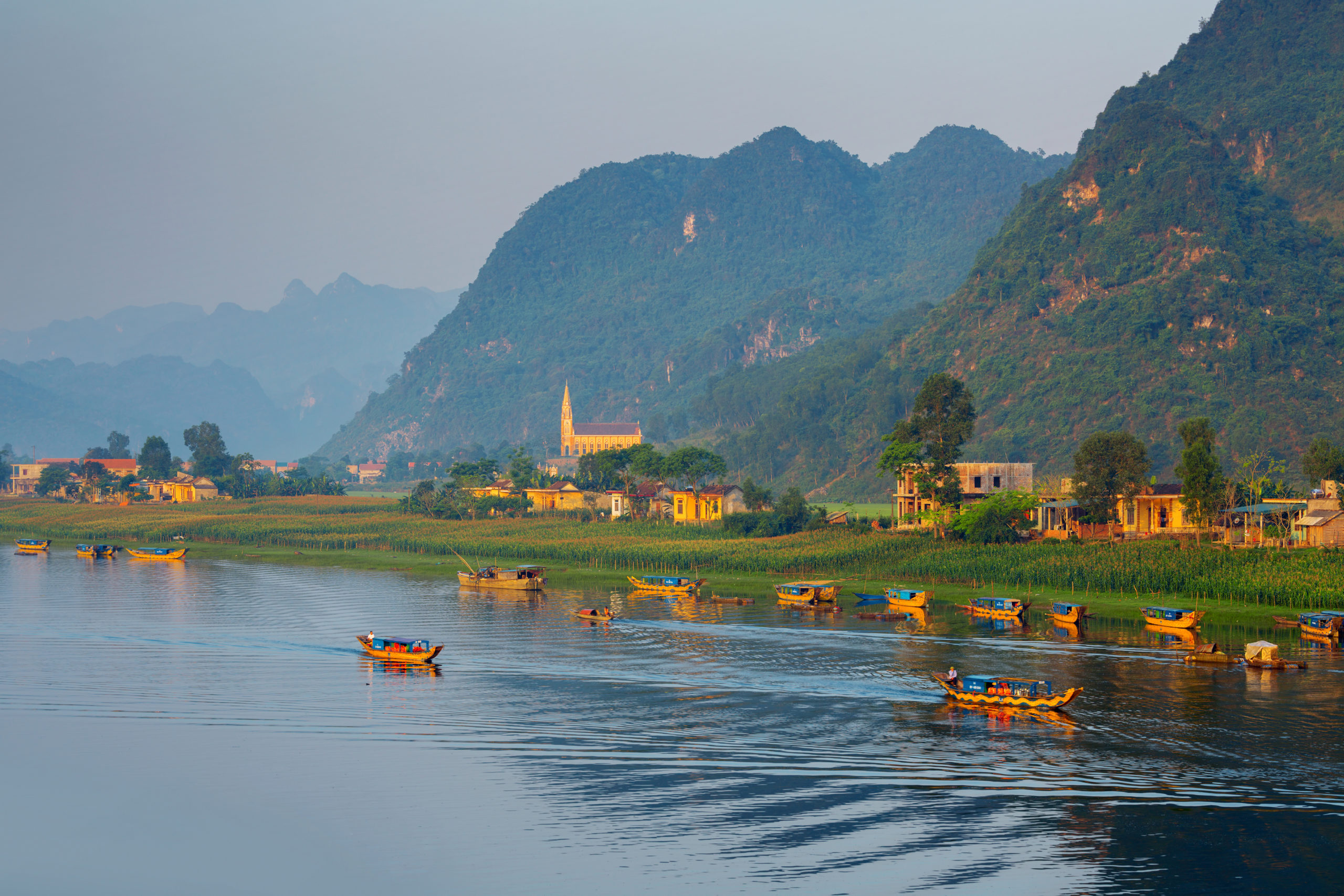
Everyone knows Vietnam is a gorgeous destination with plenty of beautiful scenery, fantastic culture, an advancing economy, and great hospitality. The cave systems are some of the best globally, with limestone mountains, amazing jungles, and scenic paddy fields. The national parks all have endangered wildlife, and their a must if you visit Vietnam.
Cuc Phoung National Park
One of the prestige national parks in Vietnam is Cuc Phoung National Park, located 120 Kilometers southwest of Hanoi. The national park has limestone mountains, rice paddy fields, lush forests, and indigenous housing.
You can find the Muong Hill Tribe in terms of inhabitants, which has attracted researchers and conservationists worldwide to view their amazing ecosystem with thousands of plants with trees over a million years old and hundreds of bird species and mammals. You also have some of the most sparse primates in the world (Delacour langur)
Ba Be National Park
The huge limestone mountains (1,554 M), lush green, and amazing caves don’t inspire you to visit checkout Ba Be National Park. Then the plantation will! You will find the biggest freshwater lake in Vietnam, with over 500 plants, 200 birds such as the honey buzzard, serpent eagles, and mammals.
The park has many trails and routes, so you can get a great view of the animals like Chinese pangolins, langurs, slow loris, macaques, monkeys, and 43 reptiles. You also have the Tonkin snub-monkey and the Vietnamese Salamander.
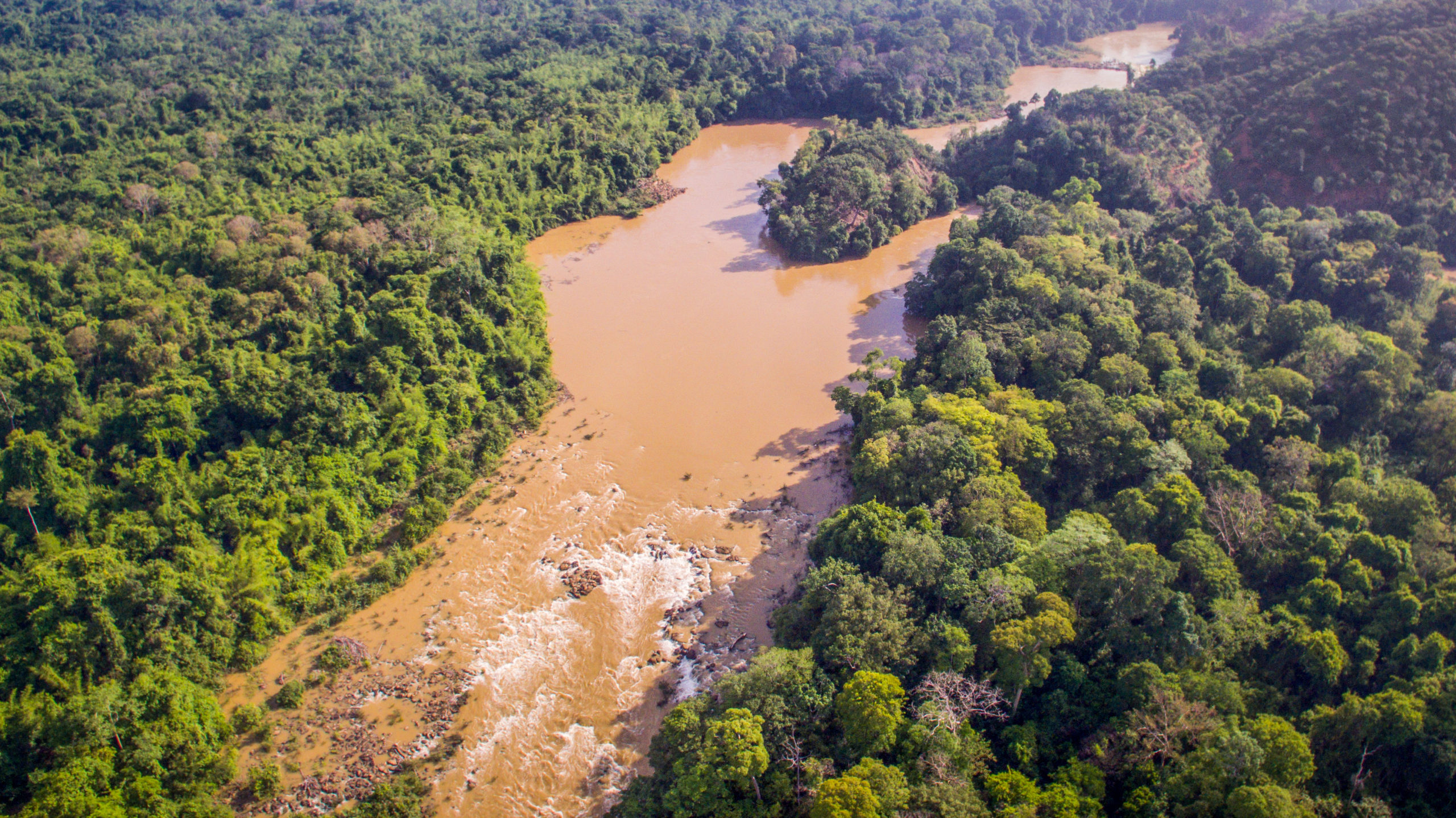
Nam Cat Tien National Park
This national park is lush with tropical rainforest, spanning over 72,000 hectares. This national park is great for birdwatching, mountain biking, spotting rare wildlife, and hiking. The type of animals you can see here are wild boar, sambar deer, Asian elephant, endangered monkeys, sun bears, and exotic fauna.
You can find tour books and tour guides provided by the park to give you a detailed area guide. You can find birdwatching huts and nighttime safaris. The peak times for the park are weekends and national holidays, so always plan ahead.
Tam Dao National Park
A beautiful national park with some incredible mountains to discover, biodiversity, and eco-systems. Tam Dao, which translates as Three Islands, has more than 1000 plants and Aminals to discover in its tropical forests.
You can visit the national park any time of year, but the best time to visit is Jan to April when the weather is dryer. One thing that makes this national park stand out from others is the animals which prefer the drier weather with low temperatures.
You can find 280 + species, and some are scarces compared to other wildlife like the silver pheasant, white-cheeked black monkey, Tam Dao snake-headed fish, and wood grouse. Also, the national park has plenty of rare birds such as the Chestnut-headed Tesia, Purple Cochoa, Blue-naped Pitta, and Pale-footed Bush Warbler.
Phong NHA-KE Bang National Park
Again, another amazing national park located in North Vietnam (Quang Binh Province) is a Unesco World Heritage Site. One of the main attractions is the 70 Kilometer cave system, which is a huge system called Hang Son Doong Cave.
The unique thing about this park is the beauty below and above ground with its amazing flora and fauna. The park also has incredible wildlife like black bears, elephants, and tigers. Also, you have endangered primates like the gibbon, langur monkey, and macaques found in the trees of the forest.
You can also find rare birds that you don’t often see in Vietnam, like the Chestnut-necklaced partridge and the short-tailed scimitar babbler.



